| |
|
5 March 2013
Angelika Levi’s Family Super-8 Archive and Films
Angelika Levi was present
The filmmaker Angelika Levi started shooting Super-8 films as a teenager. Later on she studied at the DFFB, the Berlin based film school, and made mainly short, experimental films. Her first feature length documentary, Mein Leben Teil 2, came out in 2003 followed by Absent Present in 2010, in which she inserted material from her super-8 film archive.
The super-8 material relates to and resonates private memories as well as Germany’s past. Angelika Levi will present a selection of super-8 films from her family’s archive (1966-1975), her own early films (1982-1994), and films she made in Chile (1996-2000).
Among others:
Die Tulpe, Holland 1975, super-8, 30 sec
A tulip in a vase on a table in the garden is pulled to pieces.
Währungsumstellung 1990, normal-8, 10 min
Karla in Hamburg and trip to the North Sea.
Urlaub in Italien, Italy 1982, super-8, silent, 5 min
3 women make holidays nearby Rome at the sea. A short triangle love story.
Petje kommt nicht, Berlin 1983, super-8, 8 min
Josje is waiting for her girlfriend Petje to come from Amsterdam. At home, en route and in the rehearsal room. She composes a song.
Sexparty, Amsterdam/Berlin 1987, super-8, 10 min
“Much of what women filmed on a party in the punk and the squatter’s scene, went ‘lost’ in the Kodak-lab. Sex Party, for this reason, remains incomplete, a fragment, and, as a matter of fact, a document of queer culture precarity.” (Marc Siegel)
Faust aufs Auge, 1988, Highband (DVD) 5 min
… with Antje Schäfer, who was the camera-woman in almost all films; based on models made by the film architect Robert Herlth for Faust by Murnau.
Karla, Hamburg 1993, super-8, colour, 3 min
Wheel chair trip with Karla Levi. <br/>
Picoroco, Chile 1997, super-8, bw, 6 min
Close bodies, near Picoroco, near Santiago.
Süden, Chile 2000, super-8, bw, 6 min
Journey to Purranque and Chile.
Herbarium, Chile 1996/97, super-8, colour + bw, 10 min
Ursula Levi’s herbarium, Instituto Pedagogico, Museo Nacional de Historia Natural and expeditions to the Isla Fresia, Bosque de Quintero, North.
Valparaiso, Chile 1997/98, super-8, colour + bw, 5min
Pacific, friends, Ciudad Abierta.
Anden, Chile 2000, super-8, colour, 3 min
Flight over the Andes, Naufragio.
|
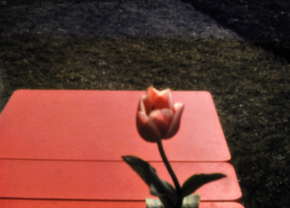
|
| |
15 to 19 January 2013
African Cinema Series II
This January, Portikus, in collaboration with the curator and film scholar Marie-Hélène Gutberlet, proceed with African Cinema Series with screenings on five consecutive evenings. The films take a look at night narratives and the changing character of things and their surfaces in artificial light.
15 January 2013
Le boxeur aux gants rouges/The Boxer with the Red Gloves
Douglas NT & Gulda El Magambo, DRC, 2007, 10’
Video, original version French & Swahili
Before his next fight a boxer is looking for a source of power and pays a visit to the seer Christian Kazadi, who gives him specific instructions in a ceremony.
The young man in immaculate white shorts is boxing the evil spirits, wearing gloves red with sacrificial blood. Or maybe it is something else: is the red blood on the boxing gloves to be drowned in vapours of gin in order to kindle the strength needed to ensure the fighter’s victory? But who is the boxer in red gloves, under the eye of the unmoving powdered beauty of the ritual actually fighting? The mysterious, inscrutable figure, its nudity casually covered by a white sheet, dominates the scene; an animist ritual that transforms doubts into certainties and probably an even greater number on certainties into doubts. Mystery, ritual, sensuality: this is what it is about. The images tell a great deal more but this is all we shall ever know. (Pascal Martin Saint Leon & Jean Loup Pivin)
Luanda a Fabrica da Musica
Inês Gonçalves and Kiluanje Liberdade, Angola 2009, 54’
Editing: Margarida Leitão, Maria Joana, Production: Noland Films.
Documentary, DigiBeta (DVD), Portuguese and Kimbundu with English subtitles
After 10 years of independence war and 17 years of civil war, the Angolan writer Pepetela notes: ‘Yesterday was the dark night of colonialism. Today is the suffering of war, but the morning will be a paradise. This morning never came, only an eternal now.’
The children of this eternal today call themselves DJ Buda, Sirugu, Zigo. They make electronic music – Kuduru, invented in the suburbs of Luanda. Kuduru is a unique sound fusion of African and Caribbean rhythms, techno and house. In a back room of his small studio, which consists of an old computer, a couple of speakers and a microphone, DJ Buda produces new sounds each day. The kids stand in line to scream their lyrics into the microphone: ‘I'm fearless in all the confusion, and might appear underfed to you, but who messes with me, hurts himself.’ Brought from the studio to the streets, the music blares from homemade mobile sound systems and makes people dance. The inspiration to that, says DJ Buda, comes out of nowhere, and it creates something great. (Text: Dok Leipzig, Cat. 2009)
Luanda, a Fábrica da Musica was part of the exhibition ‘Agora Luanda’ by the photographers Inês Gonçalves and Kiluanje Liberdade, 2007/2008, Iwalewa-Haus, Bayreuth.
Gulda El Magambo, born 1969 in Lubumbashi, joined the Vicanos-Club, a collective of self educated artists, in the early 1990s. He is actor, then dramatic advisor and author of grafic novels. And later works in photography and video. He works intensively on the history of the city of Lumumbashi, more specifically child labour in the mines. His works have been shown at the Festival Dok Leipzig 2009 and lastly at PICHA, the Lumumbashi Biennale 2010.
Douglas Nt started with audiovisual animation and realised two animated shorts in 2000 and 2004. Douglas NT is a member of the Vicanos-Club in Lumumbashi and works as producer in the context of the collective. In his solo work, he realised a series of documentaries and experimental film works.
Inês Gonçalves lives and works in Lisbon as a photographer and camerawoman; Other Neighbourhoods 1999, Uncertain Homeland 2005.
Kiluanje Liberdade, born in Angola 1976, studied communication and cultural studies in Lisbon. He is actually director at TV Zimbo in Luanda, He worked as assistant director for Favor da Claridade (Teresa Villaverde) and production assistant for the exhibition Exposiçã de Fotografias com Banda Sonora, Cap Verde, curated by Inês Gonçalves und Vasco Pimentel. He realised several films together with Inês Gonçalves: Outros Bairros 2005/06, Tchiloli, Masks and Miths 2009.
|
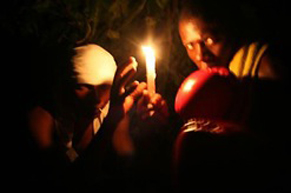
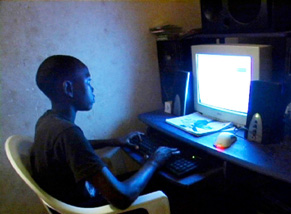
|
16 January 2013
Rencontres Picha, LUMUMBASHI Biennale, experimental short films
Patrick Mudekereza, writer and curator, and Sammy Baloji, graphic artist and founder of the graphic novel and artist’s club ‚Vicanos Club’ Lumumbashi (Latin „vicus noster“ = our village) and later artist working in photography launched the Lumumbashi Biennale held fort he first time in October 2010 with artistic director Simon Njami. Mudezereza and Baloji see themselves ‚as nexus between the local creative scene and the world waiting to see what we have in the belly’ (Mudekereza). In their work they deal with the colonial and postcolonial heritage of their city, the copper mine city of Lumumbashi, province of Katanga, Democratic Republic of Congo (DRC) and only get help from a few national and international Institutions. The biennale is the culminating point of their year-round work at the Picha Centre, which is the dynamic spot from with they do something ‚for us’. (Kat. Rencontres Picha, Biennale de Lumumbashi, Octobre 2010, Paris: Filigranes Éditions 2012) Picha produced most of the experimental films shown in this programme.
Cameleon, Douglas Nt, 2010, 10’26“, original version
A l’écoute du silence, Gulda el Magambo, Text, Sumba Maly Issac, 2010, 10’33“, French original version
Candle in the Dark Life, Berry Bickle, 2010, 6’30“
„Une Flamme dans une vie obscure“, poem and performance by Seraphin Bukasa, French OV
Suite et fin, Dorothee Kreutzfeldt, 2009, 8’
cinematography: Bettina Langa, Georges Senga and Dorothee Kreutzfeldt, editing: Kerryn Potgieter, voices: Maeline Le Lay, Ramcy Kabuya and Sando Marteau, Songs by Sando Marteau: Prod. PICHA with the support of SESAM and the French Embassy in the DRC; Script: Groupe Libr’écrire de Lumumbashi (Fiston Mwanza, Patrick Mudekereza, Ramcy Kabuya, Séraphine Bukasa, Ben-Hur Kabengele and Maeline Le Lay). French with English subtitles
Escale à Kinika, Douglas NT, 2010, 10’50“
Script: Douglas NT and Christian Mpinda, music: Carine NT, cinematography & editing: Douglas NT
Production: DL Multimédia and Alba; Original version with French subtitles
Sacredieu! (La nuit), Heeten Bhagat, 2010, 9’30“, French original version
Heeten Bhagat was born 1969 in Harare, studied languages and natural sciences in Zimbabwe, the USA and Great Britain and in 1991 received a BA in Design. As a costume designer, he regularly worked on many film and television productions (Flame, 1998) before starting to work as a filmmaker, producer and curator. His recent films include the documentaries From Zimbabwe to Santa Fe (2012), Peace Beyond Justice (2008) and I Am the Rape (2007).
Berry Bikle was born 1939 in Bulawayo, Zimbabwe, Berry Bickle studied Art in Durban. She left Zimbabwe for exile in Maputo after the break out of violence against the white population in 2009. Bickle is a painter, she also works in ceramics and shortly creates installations that encounter Zimbabwean history. Her current work in painting, photography and video builds up on a broad historical and social research, constantly shifting limits of genres and epochs and in doing so, reaching out for an archaeology of the present. Her work is exhibited worldwide.
Dorothee Kreutzfeldt was born in Windhoek, Namibia in 1970, Dorothee Kreutzfeldt studied art at the Michaelis School of Fine Art in Cape Town (1993-96). She has been involved in a number of public art initiatives. She teaches at UCT and WITS School of Fine Arts and in community based projects such as the Creative Inner City Initiative and was cofounder of the Joubert Park Project, Johannesburg; residencies in South Africa, DRC, Spain, Switzerland. She has been exhibited in South Africa and internationally.
Gulda El Magambo, born 1969 in Lubumbashi, joined the Vicanos-Club, a collective of self educated artists, in the early 1990s. He is actor, dramatic advisor and author of graphic novels and later works in photography and video. He did extensive research on the history of the city of Lumumbashi, more specifically child labour in the mines. His works have been shown at the Festival Dok Leipzig 2009 and lastly at PICHA, Lumumbashi Biennale 2010.
Douglas Nt started with audiovisual animation and realised two animated shorts in 2000 and 2004. Douglas NT is a member of the Vicanos-Club in Lumumbashi and works as producer in the context of the collective. In his solo work, he realised a series of documentaries and experimental film works.
|
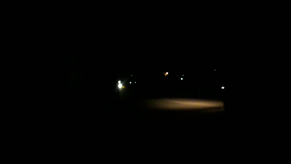
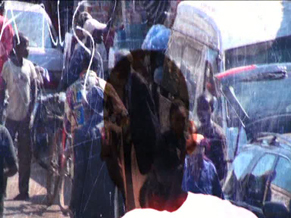
|
17 January 2013
Les saignantes/The Bloodettes
Jean-Pierre Bekolo, Cameroon/France 2005, 93’
Production Quartier Mozart Films Cameroon/France
Cinematography: Robert Humphreys, editing: Jean-Pierre Bekolo music: Joelle Esso and Adam Zanders. With Adèle Ado (Majolie), Dorylia Calmel (Chouchou), Emile Abossolo M’bo (Ministre d’Etat), Louis-Balthazar Amadangoleda (SGCC), Essindi Mindja († 2005; Essomba) a.o.
Feature fiction film, 35mm/HD (DVD) French with English Subtitles
‘Two women in Yaoundé. It is the year of 2025. A deep female voice with hypnotic impact speaks a lot about Mervongou – who knows what or who it is. One of the women hangs in an apparatus that is used by astronauts to practice the movement in weightlessness. She is having sex with an old man who lies on the bed and after a while he doesn’t move anymore. He was a big shot in Yaoundé in the year of 2025. This scene is underlined by great music with a lot of bass. It is obvious that Jean-Pierre Bekolo has seen much Godard. There are script tablets and jump cuts and all sorts of gadgets at the lowest level of funding. Most of the time it doesn't make sense in terms of what the plot would be if it did exist, but it is great fun and with its Microcinema funds Bekolo manages to create a lot of atmosphere. Certainly Bekolo has also seen much of Mambety and continues the tradition of the African avant-garde film, with the same sense of wacky humour and the iconic in the presentation of his actresses.’ (Ekkehard Knörer, Jump Cut)
„A horror movie on sexual politics“ (bekolo.blospot.com/)
‚Les saignantes, by Cameroonian filmmaker Jean-Pierre Bekolo is a film that made a lot of saliva and ink flow in Cameroon and elsewhere. The film was almost censured by the Cameroonian Ministery of Culture. Why? Because, as the filmmaker told us, „the censure commission esteemed the film to be ‚against the regime’ and ‚pornografic’.“ This film, beyond these considerations, points at a real problem: the future of Africa.’ (Zouhour Harbahoui, http://www.grioo.com/info8719.html)
Jean-Pierre Bekolo, writer, actor an director, was born 1966 in Cameroon, lives and works in Yaoundé, Toronto, Paris, Brussels and Durham DC (where he teaches film). Bekolo subverts conventions of the Western mainstream narrative cinema as much as the didactic constitution of African cinema and literature. He received numerous awards, for Quartier Mozart (1992) the British Film Institute Award alongside with Quentin Tarantino for Reservoir Dogs 1993. Le complot d’Aristote (1996) was awarded at the Sundance Film Festival 1997. La grammaire de Grand-Mère 1996 (Interview Film with Djibril Diop Mambety) and TV productions. Jean-Pierre Bekolo won the "Silver Etalon de Yennenga" for his work on the film at the 2007 Ouagadougou Panafrican Film and Television Festival (Fespaco).
Adèle Ado won Best Actress for her work in Les Saignantes at the 2007 Ouagadougou Panafrican Film and Television Festival (Fespaco).
|
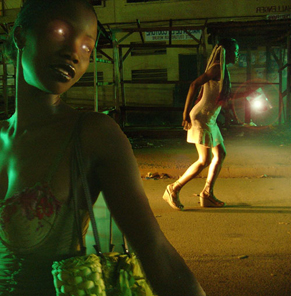 |
18 January 2013
Kempinski
Neïl Beloufa, 2007, 14’
Video (DVD), French with English Subtitles
At night in the suburbs of Bamako, the capital of Mali, in the glow of neon light various amateur actors describe their vision of the future. They speak in the present tense and directly to the camera, talking about animals and fabulous creatures, mobile homes that drive across continents, about a life without cars and without telephones, science fiction, telepathy, and the speed of light.
Beloufa made Kempinski during his study period in cooperation with students of the video class of the Bamako Art School, Ecole des Arts et Métiers Bala Fasséké Kouyaté. The film has variously been shown as an installation.
Hóspedes da Noite/Night Lodgers
Licínio Azevedo, Mosambique 2007, 53’
Production: Ebano Multimedia
Camera: Karl de Sousa, editing: Orlando Mesquita, sound: Gabriel Mondlane
Documentary, DigiBeta (DVD), Portuguese, Macua and Sena with English Subtitles
During the colonial era, the Grand Hotel was the largest hotel in the city of Beira in Mozambique: 350 rooms, luxury suites, a swimming pool of Olympic dimensions. Today the building is a ruin with no electricity and no running water. There are 3500 people who live here, some for 20 years already. All the rooms, hallways, corridors and service areas, the cold rooms and bathrooms of the hotel are inhabited. Although the house seems to be a dark labyrinth, the documentary makes this place shine bright and confident.
Neïl Beloufa, born 1985 in Paris, studied art at the Ecole Nationale Supérieure des Beaux-Arts de Paris from 2004-2009; 2008 at the California Institute of the Arts, in Valencia USA
2007 and the Cooper Union, New York USA. His exhibitions include 2008 Six Feet Under, Whitebox, New York USA; Liquid Room, NCCA - National Center for Contemporary Art, Moskau RU
54; Internationale Kurzfilmtage, Oberhausen
2007; Future in Present Tense, Kai Middendorff Gallery, Frankfurt 2009; 10 jours, 10 artistes, 10 videos, Palais de Tokyo, Paris. The film was awared with the ARTE-price at the Oberhausener Kurzfilmtage, the award for intercultural dialogue of the German Foreign Federal Office at the European Media Art Festival in Osnabrück 2008 and with the Short Film Grand Prize at the Indie Lisboa Filmfestival 2009. Lately shown as installation at the Paris Triennale, Intense Proximity, 2012.
Lucínio Azevedo is director and writer. He was present when Ruy Guerra and Jean-Luc Godard built the INC (the national film institute in Mozambique) in 1977-78. Today Azevedo is a freelance filmmaker and cofounder of the biggest Mozambiquan film production, Ebano Multimedia. Quiet a few of his films achieved prizes at festivals around the world. He made The Devil’s Harvest (1988), Marracuene (1990), The Tree of Our Ancestors (1994), Tchuma Tchato (1997), The Last Prostitute (1999), Community Stories (2000), The Bridge (2001), Eclipse (2002), Hands of Clay (2003), The Demining Camp (2005), The Island of Spirits (2010) among others.
Hóspedes da Noite was awarded with the Golden FiPA-price in Biarritz 2008 and Best Documentary at the Brussels Film Festival 2008.
|
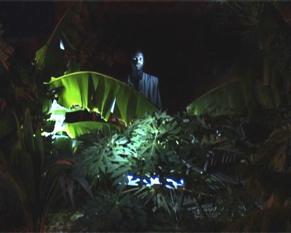
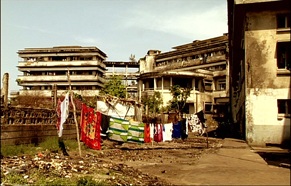
|
19 January 2013
Bamako
Abderrahmane Sissako, France/Mali/USA 2006, 112’
Cinematography: Jacques Besse, sound: Christophe Winding, editing: Nadja Ben Rachid and Pauline Casalis, Produkcion: Archipel 33, Chinguitty Films, Mali Images, Arte France.
With Aïssa Maïga, Tiècoura Traoré, Hélène Diarra, Habib Dembélé, Djénéba Koné, Aïssata Tall Sall, William Bourdon, Roland Rappaport, Danny Glover, Elia Suleiman as well as Aminata Traoré, Madou Keita, Assa Badiallo Souko, Zegué Bamba and Georges Keita as themselves,
Feature film, 35mm (DVD) Bamanan, Senufo, Wolof, Englisch and French with English subtitles
Bamako. Melé is a bar singer, her husband Chaka is out of work and the couple is on the verge of breaking up... In the courtyard of the house they share with other families, a trial court has been set up. African civil society spokesmen have taken proceedings against the World Bank and the International Monetary Fund whom they blame for Africa's woes... Amidst the pleas and the testimonies, life goes on in the courtyard.
‚A rarity among contemporary filmmakers, Abderrahmane Sissako is doing his best to uphold the tradition of „J’accuse“ and the outraged polemic. For his latest film, Sissako actually living Paris, returned to his father’s courtyard in Bamako, the capital of Mali, and staged an act of symbolic justice. Bamako is a courtroom drama that takes place within a mud-walled compound.
„It’s obviously an improbable scenario: to put on trial these two institutions that nobody can hold accountable. But that’s the point. In this little courtyard we make the impossible possible.“ (Sissako)
The tribunal in Bamako is staffed with real judges and lawyers, whom were armed with extensive research material. Sissako also assembled a cross section of witnesses, from childhood friends to a former minister of culture [Aminata Dramane Traoré], all appearing as themselves.
Bamako, despite its equation of globalized capitalism and neocolonialism, to an almost surreal degree emphasises the drift of daily life. In the very space where the court is in session, residents come and go, women dye fabric, a wedding party passes by, children watch TV. The courtyard, Sissako says, is Malian society in miniature.’ (Dennis Lim, New York Times, 2007/02/11)
Abderrahmane Sissako is one of the most distinguished and inventive filmmakers working in Africa today. Born in Mauritania 1961 and raised in Mali, his father's homeland. His views grew more focused when he encountered the writings of Che Guevara, W. E. B. Dubois, Frantz Fanon and Aimé Césaire. He was also galvanized by the global anti-apartheid movement and caught up in a growing resentment toward the military dictatorship in Mali. By his late teens he was organizing student strikes. He returned to Mauritania in 1980. A study grant allowed him to attend the University of Moscow. Le Jeu (The Game; 1990), first presented as a graduation assignment, won the prize for best short work at the Giornate del Cinema Africano of Perugia in 1991. His work has consistently won prestigious awards ever since. His filmography includes Octobre (1993 – made in Moscow), Sabriya (1996), Rostov-Luanda (1997 – made in the context of Documenta X), La vie sur terre (Life on Earth, 1998), Heremakono (Waiting for Happiness, 2002). His latest film is Bamako (2006).
African Cinema Series ÷ In collaboration with vagabonding reel to real, Portikus (http://www.portikus.de/) and the film studies chair at the Goethe-University Frankfurt a.M. ÷ Funded by Hessische Filmförderung

|
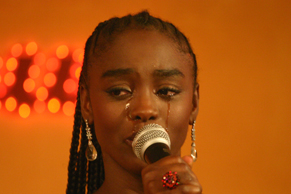 |
13 November 2012
POSING FOR THE REVOLUTION?
veryday Rebellion by Arash and Arman T. Riahi
The film project Everyday Rebellion by the brothers Arash and Arman T. Riahi (Vienna) deals with the creativity of the nonviolent protest. It portraits activists who fight against new and old borders within political and social paradigms all over the world. The main focus of the two filmmakers lies on the image of the protest itself. They put the focus of their ongoing research on the methods, tactics and poses of rebellion, their common grounds and new forms and will personally present their work this evening.
The project being closely connected to earlier politically motivated and agitprop films places itself between theory, art and activism. As a documentary film and a cross media project Everyday Rebellion amplifies the textures of cinema as much as the parameters of today’s online media. |
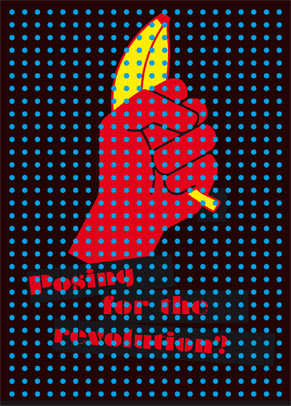 |
3 October 2012
Sans Soleil - From a world with no centre
This film measures the territory of the human brain, its capacity to think and remember, the productivity of imagination along a cascade of pictures, some of which Marker made himself, others were found, on a trip to modern Japan and on excursions to Guinea-Bissau or Iceland, San Francisco or Paris. Simultaneously the film renegotiates elements of the political order and looks at society and anarchy, fascism and socialism, illness and health, reason and fantasy, document and fiction with a sense of originality for which no taboo is too sacred and no utopia too keen. (Fritz Göttler, obit, SZ 30 July, 2012)
„He used to write me from Africa. He contrasted African time to European time, and also to Asian time. He said that in the 19th century mankind had come to terms with space, and that the great question of the 20th was the coexistence of different concepts of time. By the way, did you know that there are emus in the Île de France?
Chris Marker was an exceptional filmmaker, photographer, writer, graphic artist; he had fun to demount himself as an author, artist and as a personality and at the end to make himself invisible. LES STATUES MEURRENT AUSSI (1953, co-directed with Alain Resnais), LA JETÉE (1962), LA SIXIÈME FACE DU PENTAGONE (1968), LA SOLITUDE DU CHANTEUR DE FOND (1974), BERLINER BALLADEN (1990) and 35 other films belong to his oeuvre.
Sans Soleil/Sunless, Chris Marker 1983, 100’ (German Version)
|
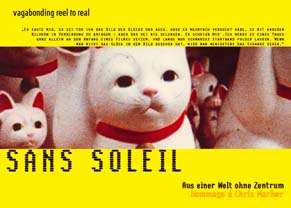 |
23 May 2012
The world on the move – Four films by Artavazd Pelechian
The films by Armenian filmmaker and theoretician Artavazd Pelechian who in the 1960ies studied film at the VGIK, the Moscow film school, could only be seen in the West after Perestroika. It was Jean-Luc Godard with Serge Daney, who tried to make Pelechian’s films more known in Western Europe.
„A true cineaste! Unclassifiable, since you put him in the all-or-none category ‘documentary film’. Poor category! Actually, everything in his work is about montage. I didn’t know that someone, since Dziga Vertov, was practicing it with and against the grain. Suddenly I had that (pleasant) feeling to have found the missing link in the true history of cinema.”
(Serge Daney, Libération, 11.8.1983)
Fin / The end (Konec ou Vertch), 1994, BW, sound, 8’
Nous / Us (Menk) 1969, 35mm, BW, sound, 25’
Les saisons / The seasons (Tarva Yeghanaknere), 1972, 35mm, BW, sound, 29’
Notre siècle / Our century (Nach vek), 1982, 35mm, BW, sound, 50’ |
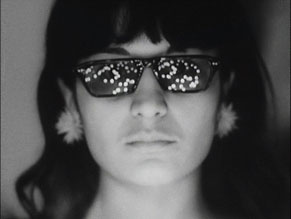
Artavazd Pelechian, Nous / Us (Menk), 1969.
|
7 March 2012
Penny Siopis - Films
Penny Siopis, one of todays most influential artists in South Africa, started to work with 8mm film in 1997, at first with family stock, shortly after with found footage. Four films emerged from that work, visually and soundwize very elaborated pieces in which personal memory and fragments of an Apartheid history converge.
My Lovely Day (1997), Video (8mm on DVD), 21’
Pray (2007), Video, (8mm on DVD), 2’48”
Obscure White Messenger (2010), Video (8mm on DVD), 15’6”
Communion (2011), Video (8mm on DVD), 5’30“ |
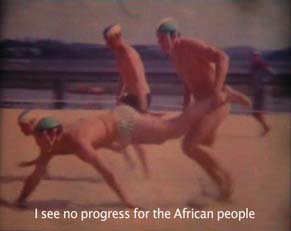
Penny Siopis, Obscure White Messenger (2010), Still, Courtesy of Stevenson Gallery and the artist.
|
11 December 2011
Am Ende auf Anfang
(The End and Restart)
reel to real leaves the Mousonturm Arthouse after eight years and becomes a freelance screening project in Frankfurt/Main. We will celebrate this event in due form and for this occasion will show a special programme with our favourite and unique films. The evening will be casual, with three film parts – “Borders & Territories”, “Loops” and “Free Radicals”; in addition, Stefan Raulf and Frank Bossert will be our DJs, and Peter and Dorothee will provide us with some appetisers.
Supriyo Sen: Wagah. D/IN/PK 2009. DVD, Farbe, Ton, 14'
John Smith: Flag Mountain. GB 2010. DVD, Farbe, Ton, 8’
Jan Verbeek: On A Wendesday Night in Tokyo. D 2004. DVD, Farbe, Ton, 5'35''
Matthias Müller: Vacancy. D 1998. 16mm, Farbe, Ton, 13’
Tracey Enim: Why I Never Became A Dancer. GB 1995, DVD, Farbe, Ton, 7'
Nam June Paik & Jud Yalkut: Beatles Electronique. USA 1966-69. BETA SP, Farbe, Ton, 3'
Bruce Baillie: All my Life. USA 1966. 16mm, Farbe, Ton, 3’
Peter Tscherkassky: Happy End. A 1996. 16mm, Farbe, Ton, 10'56“
Joseph Cornell: Rose Hobart. USA 1936-39, 16mm, Farbe, Ton, 20’
David O'Reilly: Please Say Something. IRL/D 2008. BetaSP, Farbe, Ton, 10'
Oliver Hussein/Michael Klöfkorn:STAR ESCALATOR. D 1998. DVD,Farbe,Ton,4
Daniel Eisenberg: Displaced Person. USA 1981.16mm, s/w, Ton, 11’
Jan Peters: Ich bin 33. D 1999, 16mm (Blow-Up von Super8), Farbe, Ton, 3’
Joyce Wieland: Handtinting. Kanada 1967. 16mm, Farbe, stumm, 5’
Miranda Pennell: Human Radio. GB 2002. DVD, s/w, Ton, 9'
Len Lye: Free Radicals. USA 1957/79. 16mm, s/w, Ton, 5’
|
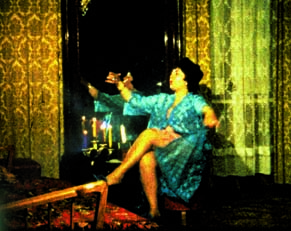
Peter Tscherkassy: Happy End. 1996
courtesey Tscherkassy & Sixpack, Wien
|
19 June 2011
I LOVE MY NEUROSIS AND MY NEUROSIS LOVES ME
This is a slightly different filmic approach to the theory that cinema is the psychiatrist’s couch for the poor. Hypochondriac, neurotic or manic — in the mass medium of film, you’ll find them all. Film translates compulsions, fears, desires and emotional lows into image and sound, usually with laughter thrown in the bargain.
Robert Olawuyi: First Person or Whatever. Germany 2008, colour, sound, DVD, 1’58”
Lola Randl / Rainer Egger: Die Leiden des Herrn Karpf – Morbus Bechterew, Austria/Germany 2007, colour, sound, DVD, 11'
Nicolas Schmidt: Sense + Innocence. Germany 2009/2010, colour, sound, DVD, 5'
James Parrott: Brats (LAUREL&HARDY), USA 1930, b&w, sound, 16mm, 20'
Christoph Girardet: Fieberrot, Germany 1993, colour, sound, Beta SP, 3'
Pascal Lievre: L'axe du mal, France/Canada 2003, colour, sound, Beta SP, 6' (print from the Archive Internationale Kurzfilmtage Oberhausen)
Andree Korpys/Markus Löffler: Gesang der Jünglinge. Germany 2009, colour, sound, Beta SP, 15' (print from the Archive Internationale Kurzfilmtage Oberhausen)
Martin Schmidt: Der präzise Peter. Germany 2010, colour, sound, Beta SP, 5'20''
|
|
22 May 2011
Tamara Grcic – Filme
Tamara Grcic’s films are just aspect of her work as an artist.
She often works with and alternates between different media, such as installations, photography and film.
Catch. Germany 1993, 16mm, 6'
Bolek. Germany 2000, DVD, 22'
Lucy Avonmouth. Germany 2001, DVD, 12'
im Auge. Germany 2003, DVD, 4'
una serenata. Germany 2008, DVD, 7'
The artist will be present for discussion |
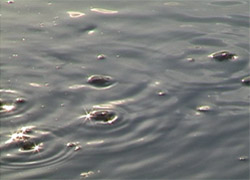 |
17 April 2011
Orte des Gedächtnisses – Experimentalfilme und Videos aus Syrien
(Places of Memory — Experimental Films and Videos from Syria)
According to Pierre Nora, an historical event that has so much symbolic meaning that it achieves an ahistorical quality and therefore exists in the present as well as the future can be called a "site of memory". This site can, but does not necessarily have to, be linked to a physical place. More important are its far-reaching consequences and the effects these can have on the human mind, effects which can be regarded as a factor of individual or collective identity formation.
Reem Ghazzi: Rack. Syria 2007, video, colour, sound, 4’
Joude Gorani: Before Vanishing. Syria 2005, video, colour, sound, 14’
Rami Farah: Point. Syria 2004, colour, sound, 3’
Eyas Al-Mokdad: Out of Love. Syria 2004, video, b&w, sound, 2’
Ammar Al-Beik: Jerusalem HD. Syria 2007, video, colour, sound, 20’
Hazem Alhamwi: Ssounde Bird. Syria 2006, video, colour, sound, 30’
Guest curator: Charlotte Bank, Berlin & Damascus |
|
13 March 2011
Eine flexible Frau – Ein Film von Tatjana Turanskij
(Eine flexible Frau (The Drifter) – A Film by Tatjana Turanskyj)
The film Eine flexible Frau (The Drifter) explores the role of work in identity formation. The architect Greta M. loses her job. Then she is sacked from her new job at a call centre. Like Don Quixote, she fights against supernatural powers: her son, the career coach, the thwarted new architecture of Berlin, and not least her own paranoid fear that she is a woman without a mission. She starts drinking and begins to drift back and forth between trying to fit in and rebellion.
Eine flexible Frau. Germany 2009, (HD) DVD, 97’
With Mira Partecke, Laura Tonke, the performers Sean Patten and Bastian Trost von GobSquad and Ilia Papatheodorou (She She Pop) and many more
Guest: Tatjana Turanskyj, filmmaker, Berlin |
|
12 December 2010
SUPER-8-GIRL-GAMES – FILME VON URSULA PÜRRER UND HANS SCHEIRL, 1984-85
(SUPER 8 GIRL GAMES — FILMS BY URSULA PÜRRER AND HANS SCHEIRL, 1984–85)
This is rare treat! Ursula Pürrer and Hans Scheirl are presenting a selection of super8 films they made in 1984–85 in their original format. These gems can be viewed in all their glory one last time before they are doomed to a mediocre life on DVD. Gezacktes Rinnsal schleicht sich schamlos schenkelnässend an (Zig-Zag Streamlet Sneaking Shamelessly Thighwetting), Rote Schnitte und die Luft dazwischen (Red Cuts Separated by Air), Hochhaus&Reißverschluß (High-Rise&Zipper), Kampf&Kuß (Fight&Kiss) and other classics of techno/lesbian short film cinema will be shown. Pürrer & Scheirl mix original takes with found footage (scenes from TV), turning clothing and props into the protagonists. These films are tableaux vivants of the 1980s: faster, shorter and in a smaller format. The melodrama is mixed with punk; electronic media crash into the celluloid. For sound, they use, among other things, examples of contemporary (post-) punk and music from their performance band Ungünstige Vorzeichen, which they founded together with Susanna Heilmayr in 1985.
In collaboration with Kinothek Asta Nielsen e.V. |
|
14 November 2010
Mit der Faust auf die Leinwand – Filme von Schlingensief & Filme für Schlingensief
(Fist Meets Screen — Films by & for Schlingensief)
The reel to real evening with films by and for Christoph Schlingensief is a homage to wild thoughts. Schlingensief, who is primarily known as a radical theatre-maker, also worked with other media such as film (super 8 and 16 mm). We are not only showing his films, but also works that come close to his aesthetics and way of thinking in their desire to dissolve boundaries, their reckless treatment of rules of narration and their desire to unleash and take apart superficial integrity and tolerability.
Christoph Schlingensief: Schlacht der Idioten. Germany 1986, DVD, b&w, sound, 21'
Babeth: Joseph Beuys, das Kapital. Germany 1988, DVD, colour, sound, 12'
Len Lye: Free Radicals. USA 1957/79, 16mm, b&w, sound, 5’
Valie Export: Tapp- und Tastkino. A 1968, Beta-SP, 2'
Guy Maddin: The Heart of the World. USA 2000, DVD, b&w, sound, 6'
Christoph Schlingensief: Für Elise. Germany 1982, DVD, colour, sound, 2'
+ SUPER 8 TRASH |
|
17 October 2010
"Don't know, just do" — Die Filme von Frans Zwartjes (Films by Frans Zwartjes)
Frans Zwartjes started making very controversial films in 1968. Sexuality, hysteria, psychosis, powerlessness and violence are reoccurring themes in his works. He initially used film as a medium for documenting his performance works as a visual artist. But this eventually led him to develop his own cinematic aesthetics. Zwartjes’s friends appear in his films as (amateur) actors and he manages the camera, sound, editing and the development of the films himself. He is also a teacher at the Vrije Academie in The Hague and the Rietveld Academy in Amsterdam. According to Susan Sontag, he is one of the most important Dutch avant-garde artists today. He is famous for his film trilogy Home Sweet Home. We will be screening Spare Bedroom, Birds, Visual Training and the dazzling A Fan, along with a few others.
Seats Two. Netherlands 1970, 16 mm, b&w, without sound, 9'
Spare Bedroom. Netherlands 1970, 16 mm, b&w, silent, 16'
Sorbet 3. Netherlands 1968, 16 mm, b&w, without sound, 6'
Birds. Netherlands 1968, 16 mm, b&w, without sound, 5'
Visual Training. Netherlands 1969, 16 mm, b&w, sound, 8'
A Fan. Netherlands 1968, 16 mm, b&w, silent, 6'
Mike Kuchar: Back To Nature. USA 1976, 16 mm, colour, sound, 13'
Guest curator: Karola Gramann, Kinothek Asta Nielsen e.V.
In collaboration with Kinothek Asta Nielsen e.V. |
|
27 September 2010 (E-Kinos (Elysee 2) Hauptwache)
reel to real@eDIT 13. Filmmaker's Festival – Sich ein Bild von der Realität machen – Filme von Lisl Ponger
(reel to real @ the 13th eDIT Filmmaker's Festival – Picturing Reality – Films by Lisl Ponger)
The experimental and documentary film programme reel to real will be a guest at the 13th eDIT Filmmaker’s Festival with a short film programme of three movies by the Viennese artist Lisl Ponger.
Ponger uses amateur film material to search for story traces of emigration, postcolonial elements of tourism and pictorial formulas of foreignness. Ponger reveals the hidden political, social and cultural content in the filmic and photographic material.
Passagen. Austria 1996, 35 mm (blown up from standard 8 mm and super 8), colour, sound, 11'
Phantom Fremdes Wien. Austria 2004, 35 mm (blown up from super 8), colour, sound, 27'
Imago Mundi - Das Gültige, Sagbare und Machbare verändern. Austria 2007, Beta SP, colour. sound, 37' |
|
5 September 2010
Filmischer Aufbruch in Lateinamerika – Fokus Argentinien
(The Rise of Film in Latin America: Looking at Argentina)
In the 1960s, Latin America developed an active, political and innovative cinema that seems to be almost forgotten today. We are taking this opportunity to take a fresh look at that time and get better acquainted with films from the honorary guest country of this year's Frankfurt Book Fair. This reel to real programme with central works from the filmic resistance against poverty, dictatorship and US imperialism focuses on Argentina, but also includes several rare short film classics from Cuba, Columbia and Uruguay.
Grupo Cine Liberacion: Ollas Populares. Argentina 1968, 16mm, b&w, in Spanish, 5’
Carlos Alvarez: Colombia 70. Columbia 1970, 16mm, b&w, 5'
Mario Handler: Liber Arche. Uruguay 1969, DVD, b&w, in Spanish with German subtitles, 10'
Cine de la Base Argentina: Las A.A.A. son las tresarmas. Argentina 1977, 16mm, b&w, in German, 18'
Grupo Los Vagos: La zona intertidal. El Salvador / Mexico 1982, 16mm, colour, in English with Spanish subtitles, 15'
Santiago Alvarez: LBJ. Cuba 1968, DVD, b&w, colour, in English with Spanish subtitles, 18'
Claudia Aravena: 11 de septiembre. Chile 2002, DVD, colour, in Spanish with English subtitles, 5'
Andres Denegri: Uyuni. Argentina 2005, DVD, colour, in Spanish with English subtitles, 8'
* All prints from the Archive of the Internationale Kurzfilmtage Oberhausen
Guest curator: Carsten Spicher, Director of the Archive of the Internationale Kurzfilmtage Oberhausen |
|
27 June 2010
Carte Blanche AV-Arkki – Zwei Jahrzehnte Videokunst aus Finnland
(Carte Blanche AV-Arkki – Two Decades of Video Art from Finland)
The media art and experimental film archive AV-Arkki will be hosting a programme with works by Finnish artists. A selection of works from 1989 to 2009 will be presented under the title As Seen on Television: The Politics of Appropriation. These films appropriate and comment on images from the cinema and television.
Anneli Nygren: Rendez-Vous With Destiny. Finland 1989, DVD, colour, sound, 4'
Liisa Karvonen & Ulla Väätäinen: Land´s End. Finland 1991, DVD, colour, sound, 7´40"
Juha van Ingen: (Dis)Integrator. Finland 1992, DVD, colour, sound, 3'55''
Mika Taanila: Paul Newman. Finland 1995, DVD, colour, sound, 3'20''
Denise Ziegler: As Seen On Television. Finland 1996, DVD, colour, sound, 3'
Petra Lindholm: Wear the Bazooka. Finland 2002, DVD, colour, sound, 8'30''
Kari Yli-Annala: '75 Mainstream Catastrophe. Finland 2004, DVD, colour, sound, 2'40''
Cecilia Stenbom: Daily Escapes I-III: The Interpreter, The Comeback, The Wrongly Accused. Finland 2005, DVD, colour, sound, 11'42''
Adel Abidin: Jihad. Finland 2006, DVD, colour, sound, 3'30''
Elena Näsänen: Night. Finland 2007, DVD, colour, sound, 6'57''
Kalle Hamm & Dzamil Kamanger: The Starfish. Finland 2009, DVD, colour, sound, 15'38''
Guest curator: Kati Kivinen, Aristic Director at AV-Arkki – The Distribution Centre for Finnish Media Art, Helsinki.
In cooperation with the exhibition “Isn't everything after all a part of our inner life, with the external left outside our consciousness – Positionen bildender Künstlerinnen aus Helsinki und Frankfurt/M.” organized by the Department for Women’s Affairs of the city of Frankfurt am Main and Atelierfrankfurt e.V., curated by Ninna Korhonen-Schwegler and Sonja Müller. |
|
30 May 201
Der springende Punkt ist der Ball – Fußball-Filme
(The Thrust is the Ball – Football in Film)
Before the World Cup kicks off and before the matches will be shown on big screens in public spaces, reel to real will be screening documentaries and experimental films about football. These films are on the sidelines of the major sports event. They about choreographed fan routines in the stands, football commentators and our team Eintracht Frankfurt - OléOléOléOlé!
Till Rickert: Fussball. Germany 2002. DVD, colour, sound, 2'58
Joachim Kreck: No. 1. Germany 1973. DVD, colour, sound, 9'32
Kyros Kikos: Defensiver Mittelfeldmann. GR/CH 2005, DVD, colour, sound, 3'05
Michael Koch: Wir sind Dir treu. Germany 2005, DVD, colour, sound, 9'
Peter Hörmanseder: REPLAY '08. A 2008, DVD, colour, sound, 11'
Torsun feat Koks & Pillen (Egotronic): Ten German Bombers. Germany 2006, DVD, colour, sound, 4'22
Manuel Francescon: Sieg des Triumphes. Germany 2003, DVD, colour, sound, 3'30
Joachim Kreck: Einsatz aus besonderem Anlass. Germany 1987, DVD, colour, sound, 14'
Guest: Joachim Kreck, filmmaker, film critic and fan of the team Eintracht Frankfurt |
|
11 April 2010
Augen weit geschlossen – Neue Arbeiten und gefundene Filme von Günter Zehetner
(Eyes Wide Shut – New Works and Found Films by Günter Zehetner)
Zehetner's works touch viewers directly. His films do not tell a story in the usual sense; rather the situation in which the film is made is the focal point. The poetry of the moment is formulated in image and sound. These films are based on the unconditional belief that reality can be transformed into film, letting us take part in the mystery of existence.
"Gefundene Filme" 15', around 1980
Es bleibt genauso wie das jetzt ist. 2009, DV, colour, sound, 0'50''
Machen sie was immer sie wollen. 2009, DV, colour, sound, 4'5''
Okay. 2009, DV, colour, sound, 1'5''
Gifted Daylight. 2009, DV, colour, silent, 0'17''
Wo ist meine Tasche? 2009, DV, colour, sound, 1'15''
Is schön; ne? DV, colour, sound, 5'20'', 2009
Yes. 2009, DV, colour, sound, 0'17''
ooooo oohoo ooooo. 2009, DV, colour, sound, 0'18''
Hi. 2009, DV, colour, sound, 0'15''
wwwhhhhhh! 2009, DV, colour, 0'17''
Sometimes. 2005, DV, colour, sound, 10'25''
Zum Geburtstag. 2005, DV, colour, sound, 1'1''
A. 2005, DV, colour, sound, 2'20''
N. 2005, DV, colour, silent, 1'30''
Guest: Günther Zehetner, filmmaker, Frankfurt/Main |
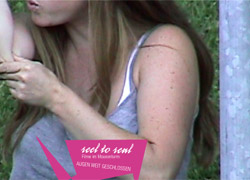 |
28 March 2010
Katastrophensehnsucht
(Longing for Disaster)
Drama, disaster and crisis are everywhere, as far as the eye can see. Catastrophe has long been part of everyday life. The apocalypse also has filmic appeal. We can enjoy small-scale destruction that may be less spectacular, but is all the more subversive and messy. Some things just have to be broken.
Sheldon Lieberman / Igor Coric: Global Warming. Australia 2007, DVD, colour, sound, 2'
Effie Wu: Paupau Bau. Germany 2004, DVD, colour, sound, 3'
Schmelzdahin: Stadt in Flammen. Germany 1984, 16mm (blow-up from super 8), colour, sound, 6'
Mara Mattuschka: S.O.S. EXTRATERRESTRIA. Austria 1993, 16mm, b&w, sound, 10'
Christine Noll Brinckmann: Polstermöbel im Grünen. Germany 1984, 16mm, colour, sound, 7'
Michel Klöfkorn: N.N. Germany 2009, DVD, colour, sound, 10'41''
Harald Hund / Paul Horn: Dropping Furniture. Austria 2008, DVD, colour, sound, 5'30''
Gunter Deller: Riverrun and Touchdown. Germany 2009, colour, sound, 8' |
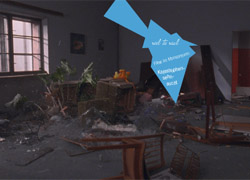 |
13 December 2009
Der Lauf der Dinge
(The Course of Things)
At the end of the year, we will be showing a mixed programme full of ironic and humorous films showing people, animals and things set in motion. They are flowing, circling, shoving and tripping — lemmings, subways, commuters, marbles and points of light.
Boris Despodov: Tolibu Dibu Dauchyu. Bulgaria 2008, Beta SP, colour, sound, 4'50''
Effie Wu: Super Smile. Germany 2007, DVD, colour, silent, 4'48"
Robert Nelson: Oh dem Watermelons. USA 1965, 16mm, colour, sound, 11'
Supriyo Sen: Wagah. Germany/India/Pakistan 2009, DVD, colour, sound, 14'
Sharon Sandusky: C'mon Babe. USA 1988, 16mm, colour, sound, 11'
Jan Verbeek: On A Wednesday Night in Tokyo. Germany 2004, DVD, colour, sound, 5'35''
David O'Reilly: Please Say Something. Ireland/Germany 2008, Beta SP, colour, sound, 10' |
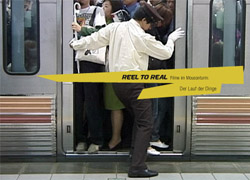 |
15 November 2009
Abwesende Körper – Video-Experimente aus Nah-Ost
(Absent Bodies – Experimental Videos from the Middle East)
Bodies in space suggest presence – so it seems. These experimental videos from the Middle East demonstrate that this is not always the case because the body and essence are not one and the same in the end. This discrepancy is a gateway for many other dichotomies: time/space, woman/man, victim/perpetrator, occupier/occupied. This leads to the audio-visual dissolution of an apparent contradiction: the more absent the body, the greater its presence, and vice versa.
Mona Hatoum: Measures of Distance. UK/Lebanon 1988, DVD, colour, sound, 15'
Akram Zaatari: Red Chewing Gum. Lebanon 2001, DVD, colour, sound, 10'
Lamia Joreige: Embrace. Lebanon 2004, DVD, colour, sound, 4'30''
Ammar El-Beik: They Were Here. Syria 2001, DVD, colour, sound, 8'
Sherif El-Azma: Interview With a Housewife. Egypt 2001, DVD, colour, sound 7'
Tawfik Abu Wael: Diary Of a Male Whore. Israel/Palestine 2001, Beta SP, colour, sound, 14'
Guest curator: Viola Shafik, curator and film studies scholar, Berlin & Cairo |
|
25 October 2009
SUPER 8 PARTITUREN – Filme (1991-2009) von Helga Fanderl
(SUPER 8 SCORES – Films (1991-2009) by Helga Fanderl)
Helga Fanderl’s short films are created out of the act of filming with a camera and are not processed in any way. They record condensed fragile moments in the present and share a reciprocal relationship with the object being filmed. Each subject acquires its own form of film and its own rhythm. For each screening, the filmmaker combines a selection of films that harmonize and provide a glimpse into her working method and her large body of works.
I
Güterzüge, 2’30
Kreuzung, 1’
Dampfwolken, 2’
Chatham St. E., 2’30“
Gelber Bauzaun, 1’
Pfosten im Fluss, 1’
Große Kaskade, 20“
Lichttempel, 2’
Zora schaukelt, 1’
II
Mona Lisa, 3’
Fontaine Médici, 3’
Volière, 3’
Passanten, 3’
Feuerwerk, 3’
III
Heftige Quellen, 2’
Binsen, 2’30“
Flugzeuge I, 3’
Apfelernte, 3’
Fontäne, 15“
Kakibaum im Winter, 3’
Nach dem Feuer II, 3’)
Guest: Helga Fanderl, filmmaker, Frankfurt/Main and Paris
In collaboration with Kinothek Asta Nielsen e.V. |
|
5 September 2009
Lady Spaces – Queer-feministische Gegenräume
(Lady Spaces – Queer Feminist Counterspaces)
Certain spaces seem to require certain social roles and performances from us: in the park, at home, on the street, in a club, in the WC. But what happens if we transgress borders (of gender), leave coordinates behind and create alternative topological models? Ready, set, go!
Chantal Ackermann: Saute ma ville. Belgium 1968, Beta, b&w, sound, 11'
Madeleine Bernstorff: Suffragetten. Germany 1998, DVD, colour, sound, 4'
Noll Brinkmann: Die Urszene. Germany 1981, 16mm, b&w, sound, 6'
Jan Oxenberg: Home Movie. USA 1973, 16mm, colour, sound, 12'
Madeleine Bernstorff/Elke aus dem Moore: Candan. Germany 1998/2005, DVD, colour, silent, 3'
Christine Lang: Rising Tide (QUIO). Germany 2009, DVD, colour, sound, 5'30''
Lola Gouine: WC & Genderpoo. France 2006, DVD, colour, sound, 2'
Leslie Hall: This is How We Go Out. USA 2007, DVD, colour, sound, 3'30''
Guest: ladyfest.ffm |
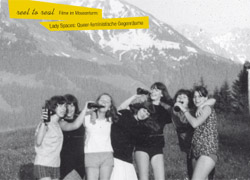 |
7 June 2009
Family Affairs
In these videos by students and graduates from the Academy of Media Arts Cologne, the authors/directors are concerned with what the filmmaker Mike Hoolboom calls a “conspiracy of chromosomes”: their own family backgrounds. These and the emotional ties are as diverse as the stylistic means and sounds used.
Rosa Hannah Ziegler: Cigaretta mon amour – Portrait meines Vaters. Germany 2006, Beta SP, b&w, sound, 6'30''
Marianna Christofides: Staubpfade. Eine Topographie aus Scherben. Germany 2009, Beta SP, colour, sound, 30'
Timothy Shearer: Trophy. Germany 2005, Beta SP, colour, sound, 14'30"
Elizabeth Cortiñas Hidalgo: 2 or 3 Things I Knew About Her. Germany 2007, Beta SP, colour, sound, 13'
Gonzalo H. Rodríguez: Rebecca. Germany 2009, Beta SP, colour, sound, 23'37
Guest curator: Matthias Müller, media artist and professor of experimental film at the Academy of Media Arts Cologne (KHM) |
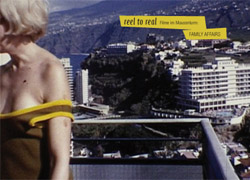 |
17 May 2009
Sieben glorreiche Jahre – Die Filme der Tödlichen Doris
(Seven Glorious Years - Films by Die Tödliche Doris)
This is an evening of super 8 films by the legendary artist trio, Die Tödliche Doris (Deadly Doris) from Berlin. Super 8 was apparently the ideal medium for Die tödliche Doris’s artistic programme, in which the factor of chance is an important creative element. That the connection between Doris and punk has always been one of aesthetics, and never of style, can be seen in almost all of their films. This is an extremely rare occasion to see these films actually screened in a non-digital form.
Energiebeutel und Zeitblase. Germany 1981, colour, sound, 7’50“
Fliegt schnell – laut summend. Germany 1981, colour, sound, 9’38“
Niemand sieht die Blindschleiche. Germany 1981, colour, silent, 2’22“
Das Leben des Sid Vicious. Germany 1981, colour, sound, 10’30“
Material für die Nachkriegszeit. Germany 1979-1980.
Sabine – Aus meinem Tagebuch. Germany 1981, colour, sound, 9’27“
Städtefilm München. Germany 1983, colour, sound, 6:00 Min.
Guest: Wolfgang Müller (Die tödliche Doris) in a conversation with Rembert Hüser and Karola Gramann. In collaboration with Kinothek Asta Nielsen e.V., Frankfurt/Main |
|
26 April 2009
Baden (performativ) / Swimming (Perfomative)
This is a sneak peek at warmer days to come. Take off your clothes and strike a pose. Bodies are reflected on the surface of water, shimmering in the bright blue and plunging into the water. These are films of people showering, stepping into the bath, jumping into water, swimming, or lathering themselves in soap; films that celebrate an affinity to the element of water and to the body. Here the pool, the shower or the beach is a stage.
Karpo Godina: Gratinirani Mazak Pupilje Ferkeverk. Yugoslavia 1970, Beta SP, colour, sound, 11' (from the Archive of the Internationale Kurzfilmtage Oberhausen)
Anja Czioska: Me Shower. Netherlands 1991, super 8, b&w, silent, 3'
Anja Czioska: Birgit duscht. UK 1993, super 8, b&w, silent, 3'
Anja Czioska: Me Shower. USA 1994, super 8, b&w, silent, 3'
Jem Cohen: Drink Deep. USA 1991, video, 10'
Pola Reuth: Kool Killer. Germany 1981, 16mm, colour, sound, 8'
soundy Hill: Water Work. UK 1987, video, colour, sound, 11' |
|
22 March 2009
Ton Filmen
(Filming Sound)
Sounds and noises are, of course, invisible. Trying to find images for them is therefore among the most exiting challenges of experimental film. The films in this programme are characterized by a search for acoustic traces in film motifs and by a special relationship between image and sound.
Miranda Pennell: Drum Room. UK 2007, video, colour, sound, 15'
Len Lye: A colour Box, UK 1935, 16mm, colour, sound, 3'
László Moholy-Nagy: Grossstadt Zigeuner. Germany 1932, 16mm, b&w, silent, 9’
Nam June Paik & Jud Yalkut: Beatles Electronique. USA 1966-69, Video, colour, sound, 3'
John Smith: Lost sound. UK 1998-2001, video, colour, sound, 28'
Daniel Burkhardt: Rauschen & Brausen 1. Germany 2007, Video, colour, sound, 5' |
|
14 December 2008
Essen & Trinken
(Eating & Drinking)
This is going to be quite a feast ― in colour and black&white, in pictures and sound. We are ending this year with a culinary programme.
Bakery. UK 1912, (?) 16mm, silent, b&w, 10'
Jan Svankmajer: Meat Love. UK/Germany 1989, Beta SP (originally 35mm), colour. sound, 1'
Carolee Schneemann: Americana I Ching Apple Pie. USA 2007, DVD, colour, sound, 16'30
Cecile Fontaine: Overeating. F 1984, 16mm, colour, sound, 3'
Carsten Strauch: Futter. Germany 1996, DVD (originally 35mm), colour, sound, 4'30“
Jim Jarmush: Coffee and Cigarettes. USA 1986, Beta SP, b&w, sound, 5'36
Peter Tscherkassky: Happy End. Austria 1996, 16mm, colour, sound, 10'56“ |
|
9 November 2008
Rekapitulieren – Die Mediendivergenz von reproducts
(Recapitulating - The Media Divergence of reproducts)
These are the chronicles of data storage devices and data loggers. Stefan Eckel and Stefan Prehn from reproducts will present a cross section of the metamorphoses of TV shows, postcards, super 8 films, mail-order catalogues, cinema classics and music videos that cure their media disease with their own medicine.
Der lange Marsch. Germany 1997, video 8, 14'
Todesboten, Germany 1994, VHS, 5'
On the Road. Super 8, 3'
English 4 U. Germany 1994, video, 13'
Toxic Corp. DVD, 1'
Pelzfreunde (Lesung mit Dia Scans). DVD,12'
Redriverrun. Germany 2004, DVD, 4'
Staplerfahrer Klaus. Germany 2001, DVD (originally 35mm), 10'
Kur-Vortrag. DVD, 4'
Licht Violett. DVD, 2'
XY losgelöst. Germany 2000, DVD, 3'
Guests: Stefan Eckel and Stefan Prehn, reproducts Hamburg |
|
19 October 2008
Verwandeln – Found Footage zwischen Celluloid und Internet
(Transformation - Found Footage between Celluloid and the Internet)
Using already existing images to create something new is a method of recycling and transformation that is almost as old as cinema itself. This programme presents films that take found celluloid or digital material from the Internet and assemble it into a collage to reveal what is otherwise hidden, or to create new connections.
Pat O'Neill: Runs Good. USA 1970, 16 mm, colour, sound, 15'
Martin Arnold: Passage a l’acte. Austria 1993, 16mm, b&w, sound, 12'
Stan Brackage: Murder Psalm. USA 1981, 16mm, colour, silent, 17'
Ulrich Wiesner: Deutschland lacht. Germany 1982, 16mm, colour, sound, 3'
Ulrich Wiesner: Afrika Bonus. Germany 1982, 16mm, colour, sound, 3'
Thomas Draschan: Metropolen des Leichtsinns. Germany 2000, 16mm, colour, sound, 12'
Thomas Draschan: Yes?Oui?Ja? Austria 2002, 16mm, colour, sound, 4'
Thomas Draschan: To The Happy Few. Austria 2003, 16mm, colour, sound, 4'
Thomas Draschan & Sebastian Brameshuber (Fordbrothers): Preserving Cultural Traditions in a Period of Instability. Austria 2004, Video, colour, sound, 3'
Guest curator: Thomas Draschan, filmmaker, Vienna |
|
14 September 2008
10 Skies – Ein Film von James Benning
(10 Skies – A Film by James Benning)
In Ten Skies there are ten shots of the sky, each ten minutes long.
All ten skies were filmed from my backyard in Southern California; skies formed from weather systems, mountain land currents, wildfires, pollution, and the wind; skies as a function of landscape. … All the shots end up with a dynamic quality. I never saw that before, I never had the courage. I took me fifty years to look at the sky like that!” (James Benning)
10 Skies. USA 2004, 16mm, colour, sound, 101 Min. |
|
15 June 2008
Zeigen/Nicht Zeigen – Ein Filmabend zu Migration
(Showing/Not Showing - Films about Migration)
Showing/not showing is about stories that remain invisible. The game of seeing and (not) being seen is played, images are shown whose location between showing and not showing produces tension, and last but not least, attempts are made to create a cinema where something Other and still unknown appears.
Maria Thereza Alves: Bruce Lee in the Land of Balzac. France 2008, DVD, colour, sound, 2'11''
Shelly Silver: What I’m Looking For. USA 2004, Beta SP, colour, sound, 15'
Brigitta Kuster/Moise Merlin Mabouna: 2006 - 1892 = 114 ans/Jahre. Germany 2006, DVD, colour, sound, 7'
Oliver Husain: Green Dolphin. Canada 2008, DVD, colour, sound, 15'
Ayse Erkmen: Coffee. Turkey 2007, Beta SP, colour, sound, 25'
Karø Goldt: Gone. Austria/Germany 2007, Beta SP, colour, sound, 3'
Guest curator: Nanna Heidenreich, arsenal experimental, Berlin |
|
11 May 2008
Figur im Raum
(The Figure in Space)
The Figure in Space focuses on experimental films that explore the relationship between the figure/body and its environment. This relationship is like a game: bodies and objects become forms, forms become choreographic figures, space becomes a mis-en-scene, planes become figures, hollow bodies become solid objects and massive forms become hovering planes. This programme has it all: film, sculpture, architecture, photography and boxing.
Jack Johnson: MEISTERBOXER DER WELT. UK 1912, 16mm, b&w, silent, 5'30"
Klaus Telscher: HER MONA. Germany 1992, 16mm, b&w, sound, 7'
Gordon Matta-Clark: CONICAL INTERSECT. France/USA 1975, colour, silent, 24'
Samuel Beckett. QUADRAT I+II. Germany 1980, Beta SP, colour, sound, 14'
Steffen Ramlow: MAMAEV KURGAN. Germany 2006, DVD (blown up from super 8), b&w, sound, 4'30"
Miranda Pennell: FISTICUFFS. UK 2004, Beta SP, colour, sound, 9'
Lutz Mommartz: OBEN/UNTEN. Germany 1967, 16mm, b&w, sound, 4' |
|
13 April 2008
Geistergeschichten: The Halfmoon Files – Ein Film von Philip Scheffner
(Ghost Stories: The Halfmoon Files – A Film by Philip Scheffner)
Once there was a man. He was swept up in a European war. Germany captured this man. Now he wants to return to India. If God is merciful, he will make peace soon. Then this man will go away from here.” These crackling words were spoken by Mall Singh into a phonograph horn on 11 December 1916 in the city of Wünsdorf near Berlin. 90 years later, Mall Singh is just a number on an old shellac record in an archive, one of hundreds of voices of colonial soldiers in World War I. These recordings are the product of a unique alliance between the military, science and the entertainment industry. In his feature length documentary film, THE HALFMOON FILES, Philip Scheffner traces these voices to the place where they were recorded. Like an unfinished game of Memory, he uncovers images and sounds in which the ghosts of the past are brought back to life.
The Halfmoon Files. A Ghost Story. Germany 2007, colour, sound, 87’'
Guest: Philip Scheffner, filmmaker, Berlin |
|
16 March 2008
Helter Skelter
These films are in a hurry-scurry, higgledy-piggledy, head over heals; they rise and fall in waves, dive down to great depths and soar to breath-taking heights. Cameras fly through the air, images are accelerated. This is a programme like a rollercoaster ride.
Jörg Wagner: Motordrom. Germany 2007, Beta SP (originally 35mm), b&w, sound, 9'
Steina Vasulka: A so desu ka. USA 1994, video, colour, sound, 9'40
René Clair: EntrActe. France 1924, 16mm, b&w, sound, 22'
Siegfried A. Fruhauf: Höhenrausch. Austria 1999, 16mm, colour, sound, 4'
Thomas Aigelsreiter: Key West. Austria 2002, Video, b&w, sound, 5'
Nam June Paik & Jud Yalkut: Beatles Electronique. USA 1966-69, video, colour, sound, 3'
Auf dem Monitor im Foyer:
arlo Krauss: Fahr doch! Germany 2007, DVD, colour, sound, 70' |
|
9 December 2007
Schlafen
(Sleep)
Sleep has always been a great mystery. Even modern research has not been able to uncover all of sleep’s secrets. We know now that life can only by endured if we alternate between being awake and sleeping. Still, images of sleeping people have an external appearance that is often associated with vulnerability and weakness, with innocence and death, while an exciting life is played out on the inside, where we dream of wild things. Film is the material for experimenting with what appears thoughtful, but is also strange.
Einstürzende Neubauten: Stella Maris. Germany 2000, DVD, b&w, sound, 3'39"
Günter Zehetner: Christine schläft. Germany 1992, super 8, colour, silent, 9’
Dietmar Brehm: Blitze. Austria 2000, 16mm, colour, sound, 7’
Kerstin Cmelka: Et in arcadia ego. Austria 2001, 16mm, colour, silent, 3’
Corinna Schnitt: Das schlafende Mädchen. Germany 2001, 16mm, colour, sound, 8’45"
from the archive of the Internationalen Kurzfilmtage Oberhausen)
Edwin Porter: Dream of a Rarebit Friend. USA 1906, 16mm, colour, silent, 8'
Tehching Hsieh: The One Year Performance: 1980/81, USA 1981. DVD (originally 16mm), colour, silent, 6'08"
Sekundenschlaf in Fahrsimulator. Zusammengestellt von Katja Karrer
TU Berlin, Fachgebiet Mensch-Maschine-Systeme). 2007, DVD, 4'
Peter Tscherkassky: Dream Work. Austria 2001, Beta SP (originally 35mm), b&w, sound, 11'
Doug Aitken: The Moment. USA 2004, DVD, colour, sound, 3'
Guest: Günther Zehetner, filmmaker, Frankfurt/Main |
 |
18 November 2007
Shoppen
(Shopping)
“Somewhere, Wal-Mart opens a new store roughly every four days and yet the actual places of such developments often take on a strange invisibility. Their presence can begin to seem inevitable or even natural. Rather than examining such phenomena through the facts, experts and arguments of the traditional documentary, CHAIN tells the stories of two women as their lives are shaped by this environment.” (Jem Cohen)
Jem Cohen: CHAIN. USA 2004, Beta SP, colour, sound, 99’'
Accompanied by the lecture "Konsumlandschaften und Alltagsleben" (Landscapes of Consumption and Everyday Life) by Ellen Bareis, sociologist, Frankfurt/Main
Musical programme: Klaus Walter |
|
21 October 2007
Widerstand – Vietnam und die filmische Avantgarde
Resistance – Vietnam and Avant-Garde Film
With the general political culture of violence in the 1960s as a backdrop, experimental filmmakers used different means to protest against the Vietnam War.
Paul Sharits: Piece Mandala / End War. USA 1966, 16mm, colour, sound, 5'
Chris Marker / Francois Reichenbach: La sixième face du Pentagone. France 1968, video (originally 16mm), colour, sound, 25' (in English)
Joyce Wieland: Rat Life and Diet in North America. Canada 1968, 16mm, 14'
Carolee Schneemann: Viet-Flakes. USA 1965, 16mm, b&w, 7'
Lee Savage: Mickey Mouse in Vietnam. USA 1969, 16mm, colour, sound, 1'
Harun Farocki: Nicht löschbares Feuer. Germany 1969, 16mm, b&w, sound, 25'
Guest curator: Florian Wüst, Berlin |
|
30 September 2007
Passage à l'acte / Viewing Performance
What happens in front of the camera, behind the camera and with the camera? These are questions concerning the performive character of experimental film and the technical aspect of performances.
This event is organized in connection with the conference European Dramaturgy in the 21st Century.
Yoko Ono / Albert & David Maysles: Cut Piece. USA 1965, DVD (originally 16mm),b&w, sound, 8'
Miranda Pennell: You Made Me Love You. UK 2005, Beta SP, colour, sound, 4'
Jan Peters: Ich bin 33. Germany 1999, super 8, colour, sound, 3'
VALIE EXPORT: Adjungierte Dislokationen. Austria 1968, threefold projection, 16mm, b&w, silent, 8'
Rosemarie Trockel: Buffallo Billy & Milly. Germany 2000, DVD (video), colour, sound, 5'
Björn Melhus: Blue Moon. Germany 1991, video (DVD), colour, sound, 6'
Pippilotti Rist: I'm Not The Girl Who Misses Much. Switzerland 1986, Beta SP
originally UMatic), colour, sound, 5'
Marie Menken: Andy Warhol. USA 1965, 16mm, colour, silent, 22'
Rosemarie Trockel: Manu Spleen IV. Germany 2002, DVD (video), b&w, sound, 6'
Gustav Deutsch / Martin Siewert: Spectrum. Austria 2003, Beta SP, 49'' |
|
24.6.2007
Black Heat/White Noise
This film programme is located at the intersection between image and sound and focuses on how different types of perception thereof influence one another. The “sound film” is a common topos of Austrian avant-garde films.
Gustav Deutsch / Martin Siewert: Spectrum. Austria 2003, Beta SP, 49''
Peter Kubelka: Arnulf Rainer. Austria 1960, 16mm, 6'30"
Siegfried Fruhauf: Structural Filmwaste. Dissolution 1. Austria 2003, Beta SP, 4'
Tina Frank: iii. Austria 1996, Beta SP, 1'
Manuel Knapp: Interferenzen ~vO.1. Austria 2005., Beta SP, 10'
Ernst Schmidt Jr.: Weiss. Austria 1968, 16mm, 2'
Michaela Schwentner: r4. Austria 2000, Beta SP, 7'
Gustav Deutsch: Film ist. 9.1. Austria 2002, Beta SP, 4' (originally 35mm)
Michaela Grill / Billy Roisz: My Kingdom For a Lullaby #2. Austria 2004, Beta SP, 10'
Kurt Kren: 3/60 Bäume im Herbst. Austria 1960, 16mm, 5'
Siegfried Fruhauf: Structural Filmwaste. Dissolution 2. Austria 2003, Beta SP, 3'30"
(n:ja) / Darius Kowalski: VOID.SEQZ 3. Austria 2005, Beta SP, 4'30"
Günter Brus: Einatmen und Ausatmen. Austria 1967, 16mm, 3'
Barbara Doser / Kurt Hofstetter: Even Odd Even, Austria 2004, Beta SP, 8'
Guest: Michaela Grill, filmmaker, works at sixpackfilm, Vienna |
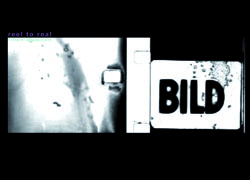 |
13 May 2007
Toute révolution est un coup de dés
Short movies by Danièle Huillet and Jean-Marie Straub
In memory of Danièle Huillet, we are presenting a selection of short movies by Straub & Huillet according to the motto “every revolution is a throw of the dice”.
Europa 2005 – 27 octobre. France 2006, DVD (Video), 5'
Machorka Muff. France 1962, 16mm, 17'
Der Bräutigam, die Komödiantin und der Zuhälter. Germany 1968, 16mm, 23'
Einleitung zu Arnold Schönbergs Begleitmusik zu einer Lichtspielszene. Germany 1973, 16mm, 15'
En rachachant. France 1982, DVD (originally 35mm), 7'
Guest: Hubert Machnik, musician/composer, Frankfurt/Main and Patrick Primavesi, theatre studies scholar, Frankfurt/Main |
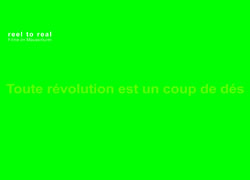 |
15 April 2007
Sexual Semiotics – Ein queer-feministischer Filmabend zu Arbeit & Sexualität
(Sexual Semiotics –Queer Feminist Films about Work and Sexuality)
The programme Sexual Semiotics explores the opportunities and burdens of sexuality and/or gender in everyday work. What are the different demands of gender performance confronting us, and how is it possible to reject or avoid them? What about all the “work” that needs to be done in the process? The films selected here document different ways of finding a place of one’s own and are records of interventions and acts of queer sabotage of regular work.
Martha Rosler: Semiotics of the Kitchen. USA 1975, video, b&w, sound, 6'
Benny Nemerofsky Ramsay: Audition Tape. Canada 2003, Beta SP, colour, sound, 8'
Anna Margarita Albelo: Tatu. France 2003, DVD (video), colour, sound, 3'
Del LaGrace Volcano & Cara Lavan: Gender Queer Qu’est-ce que c’est? UK 2005, DVD, colour, sound, 5'
Pauline Boudry & Renate Lorenz: Sometimes you fight for the world, sometimes you fight for yourself. Germany 2004, DVD, colour, sound, 5'
Karin Michalski & Sabina Baumann: Queering Work. Germany/Switzerland 2007, DVD, colour, sound, 13'
Abigal Child: Mutiny. USA 1982, VHS (originally 16mm), b&w and colour, sound, 11'
Kai Kaljo: A Loser. EST 1997, DVD (video), colour, sound, 1'
Tracey Enim: Why I Never Became A Dancer. UK 1995, Beta SP, colour, sound, 7'
Guest: Brigitta Kuster & Karin Michalski (clipclub spezial), in cooperation with the exhibit "normal love" (Künstlerhaus Bethanien, Berlin) |
|
18 March 2007
Stadtstücke
(City Plays)
The first reel to real programme this year explores the city. The works we will be presenting are somewhere between open and strictly formalist film, with found moments from pedestrian areas, train stations, intersections, sidewalks and restricted areas.
Thomas Scheffer: Surroundings. Germany 2006, video installation, sound, loop.
Martina Spiegl: Sperrflächen. Germany 2007, Video, 8’
Jan Verbeek: On A Wednesday Night in Tokyo. Germany 2004, Beta SP, colour, sound, 6'
Jem Cohen: Little Flags. USA 1992/2000, Beta SP (originally super 8/video), b&w, sound, 6'
Urs Breitenstein: Zeil-Film. Germany 1980, 16mm, colour, sound, 6'
Lisl Ponger: Phantom Fremdes Wien. Austria 2004, Beta SP, (super 8 blown up), colour, sound, 27'
Guests: Urs Breitenstein, Thomas Scheffer, Martina Spiegl |
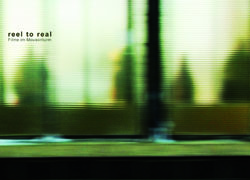 |
10 December 2006
Make a Wish!
Wishes long to be fulfilled, most of them at least. Some wishes we know about, some we don’t. Some resemble utopias; others just want to have a little bit of happiness. On our wish list, we put films that haven’t given up hope of change. They are full of longing and wanderlust, and they are about to be fulfilled, at least to a certain extent.
Chris Cunningham / Björk: Full of Love. UK 1998, DVD (video), colour, sound, 4'09“
Martin Luther King: I Have a Dream. Lincoln Memorial, Washington, DC, 28 August 1963, DVD, b&w, sound, 10'
Gustav Deutsch: Marriage blanc. Austria 1996, 16mm, colour, sound, 5'
Ferdinand Zecca / Segundo de Chomon: Le spectre rouge. France 1907, 16 mm, colour, silent, 9' (accompanied by music)
Philippe André / Roger Sanchez: Another Chance. UK 2001, Beta SP, colour, sound, 4'25
The Little Matchseller. UK 1905, 16mm, b&w, silent, 7' (accompanied by music)
Miranda Pennell: Magnetic North. UK 2003, Beta SP, colour, sound, 9'
Astrid Rieger / Zeljko Vidovic: Apple on a Tree. Germany 2006, DVD, colour, sound, 4'25
Guest: Astrid Rieger, filmmaker, Offenbach |
|
17 November 2006
Vor den Spiegeln
(In the Looking Glass)
Our mirror image is surprisingly unpredictable compared to what we think we know about ourselves. But it is also familiar. Films capture such ambivalent moments, revealing and reflecting the state of losing ourselves in our image, falling in love with, hating or forgetting ourselves — and asking ourselves what it is exactly we’re looking at.
Miranda Pennell: You Made Me Love You. UK 2005, Beta SP, colour, sound, 4'
Christoph Giradet / Matthias Müller: Kristall. Germany 2006, DVD (originally 35mm), colour, sound, 14'30
Björn Melhus: Zauberglas. Germany 1991, DVD (video), colour, sound, 6'
Shelly Silver: What I’m Looking For. USA 2004, Beta SP, colour, sound, 15'
Gnarls Barkley: Crazy. USA 2006. Beta SP, colour, sound, 3'56
Anna Berger: O.T. Germany 2005, Beta SP, colour, sound, 11'30
Ken Jakobs: The Georgetown Loop. USA 1996, 16mm, b&w, silent, 11'
Michel Gondry / Cibo Matto: Sugar Water. France/Japan 1996, DVD, colour, sound, 4'01
Derek Jarman: Art of Mirrors. UK 1973, 16mm, colour, silent, 5'30
Guest: Anna Berger, filmmaker from Frankfurt/Main |
|
29 October 2006
Hear My Song
Images accompany a tune, a film breaks out in song, people start dancing — we are presenting films that were born out of and draw their irresistible drive from music.
Bruce Baillie: All My Life. USA 1966, 16mm, colour, sound, 3'
Pippilotti Rist: You Call Me Jackie. Switzerland 1990, Beta SP, colour, sound, 4'06
Miranda Pennell: Human Radio. UK 2002, Beta SP, colour, sound, 9'
Maurice Lemaitre: Song for Rio Jim. France 1978, 16mm, sound, 6'
Prince: Sign O’ the Times. USA 1987, video (DVD), colour, sound, 3'44
Oliver Hardt: Purple Haze. Germany 1996, Beta SP, colour, sound, 2'
Torsten Alisch: Fake Emotions/Falsche colourn. Germany 1990, Super 8, colour, sound, 12'
Rocks and Waves. France 1911, 16mm, tinting, silent, 3'30 (music recording: Nicole Sang)
Cornelia Cornelsen / Florian Giefer: Die Zeit heilt alle Wunder. Germany 2004, Beta SP, colour, sound, 10'
Guest: Oliver Hardt, filmmaker and author, Frankfurt/Main |
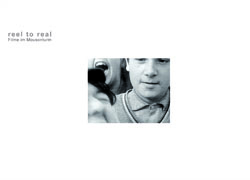 |
16 September 2006
Filmewerfen mit Projektoren – WARNIX MACHTNIX und JOCHEN zeigen SUPER8-FILME
(Projecting Films - WARNIX MACHTNIX and JOCHEN present SUPER8-FILMS)
WARNIX MACHTNIX and JOCHEN are fans and supporters of independent film production. They like get together with friends to watch strange (short) movies, ideally super 8, over a tasty drink. On occasion, they enjoy showing the best of these films to the public. All films are then tossed in one big box and then randomly selected and loaded into the projector. In the reel-changing breaks between films, there is always time for a short discussion, until the next film begins to clatter through the projector...
Guest: WARNIX MACHTNIX (Carsten Knoop & Dorit Kiesewetter, Hamburg) and JOCHEN (Torsten Alisch & Dagie Brundert, Berlin) |
|
25 June 2006
Von Grün zu Blau
(From Green to Blue)
We see grass and dense foliage, shrubbery, the sky, the sea. The turquoise blue of the Mediterranean Sea or the grey-blue of the ocean. From Green to Blue is a programme dedicated to the plant kingdom and the realm of the sea and the colours that we’ve missed so much this long winter.
Romeo Grünfelder: Sharhazeh Scampolo. Germany 1996, 16mm, colour, sound, 15‘
Marie Menken: Glympse of the Garden. USA 1957, 16mm, colour, sound, 4‘
Gregory Markopoulos: Ming Green. USA 1966, 16mm, colour, sound, 7‘
Rose Lowder: Bouquets 1-10, France 1994-1995, 16mm, colour, silent, 11‘30
Sharon Lockart: Khalil, Shaun, A Woman Under Influence. USA 1994, 16mm, colour, sound, 16‘
Marie Menken: Arabesque for Kenneth Anger. USA 1961, 16mm, colour, sound, 4‘ |
|
14 May 2006
Explodieren
(Exploding)
Bang, kaboom! Kayaks, chairs, suitcases, kitchens, nuclear bombs, fireworks, Molotov cocktails, water melons — they all explode sooner or later.
Helga Fanderl: Feu d’artifice, Germany 2000, 16mm (super 8 blown up), b&w, silent, 3’
Chantal Akerman: Saute ma ville. Belgium 1968, Beta SP (originally 35mm), b&w, sound, 13’
Robert Nelson: Oh dem Watermelons. USA 1965, 16mm, colour, sound, 11’
Oliver Lasch / Thomas Strobl: Hardcore Spezial Report. Austria 1991/1992, 16mm, colour, sound, 5’
Roman Signer: Forum Stadtpark Graz. 1987, DVD (originally super 8), colour, sound, 9’45"
Roman Signer: Aktion in der Tabakfabrik, Krems/Stein, 18.6.1988, colour, sound, 2’30"
Roman Signer: Zwei Koffer, Rheintal,5.2001, 5’46"
Roman Signer: Zwei Tische mit Fässern, Zeewolde, 6.12.2000, colour, sound, 0’46"
Roman Signer: Kabine mit Rauch, Weissbad, August 2000, colour, sound , 0’30"
Roman Signer: Im steirischen Wald. 2000 / 2002 / 2004, colour, sound, 6’25 |
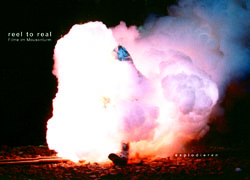 |
9 April 2006
general idea, video works (1977 - 1985)
These are the perfect quick-change artists, masters of role play, coquetry, camouflage, disguise and costume. In the 1970s, the Canadian group GENERAL IDEA made its unique debut in the art world, creating performances and videos, painting and staging themselves as an artistic/artificial constellation of figures and, not least, giving in to the overwhelming urge to play with the symbolic and mass cultural value of TV, sex and death in the age of AIDS.
Pilot. 1977, 28’
Test Tube. 1979, 28’15"
Cornucopie. 1982, 10’
Shut The Fuck Up. 1985, 14’07"
Guest: Stephan Trescher, art historian and author, Münster |
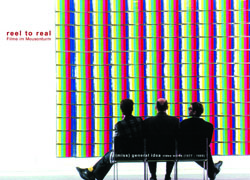 |
19 March 2006
Spielen
(Playing)
We will be showing films that play with their subject and with how we see. We will also present films in which people and animals, old and young, can be seen playing.
Mara Mattuschka: Les Miserables. Austria 1984, 16mm, b&w, sound, 3'
Bruce Connor: Marilyn 5 Times. USA 1968-1973, 16mm, b&w, colour, sound, 13'30“
Kevin Schmidt: Long Beach Led Zep. Canada 2002, video, colour, sound, 8’
Marie Menken: Moonplay. USA 1962, 16mm, b&w, sound, 4
Stan Brackage: Reflections on Black. USA 1955, 16mm, b&w, sound, 12'
Hangover LTD.: Remake. Germany 2004, Beta SP, colour, sound,19’30
“
Urs Domingo Gnad: Egotrip. Germany 2004, Beta SP (originally 35mm), colour, sound, 3'
Oliver Hussein / Michael Klöfkorn: Star Escelator. Germany 1998, Beta SP, colour, sound, 4'
und KIKERIKI aus der Sendung mit der Maus |
|
11 December 2005
Wir gratulieren der Anarchistischen Gummizelle zum 25!
(Happy 25th Birthday Anarchistische Gummizelle!)
This will be a birthday party in the old perforated style. If you missed the party in Oberhausen, this is your chance to celebrate. The birthday boys will be there. Hurrah! This is performance with a hole puncher instead of ripping, screening with real light.
Definitely included:
Im RHENUSHAUS
DER PILGERSTROM
HOLLYWOOD IM HOCHFELD
STARTBAHN WEST
NACH DEM KRIEG FUHR JOHNNY NACH WIEN
DER NARRATIVE FILM
NEE, NEE, DA WIRD NIX DRAUS
Guests from Anarchistische Gummizelle (AGZ): Heinz Hausmann, Thorsten Ebeling, Stefan Ettlinger |
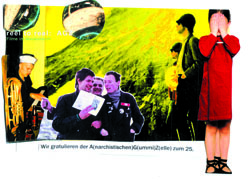 |
20 November 2005
TAGEBUCH FILMEN
(FILMED JOURNALS)
In 1990 I stood in front of my super 8 sound film camera for the first time to record where I was in my life. That’s how the film ICH BIN 24 came about. I talked about my life for the length of a role of super 8 film, until the end of role cut me off in mid-sentence (almost three minutes). A year later, I made ICH BIN 25. This year I’m 39. The result is an (unfinished) series with the title ‘Aber den Sinn des Lebens hab’ ich immer noch nicht rausgefunden’ (but I still haven't found the meaning of life yet)."
These are 16 short movies documenting the search for answers to the big questions, presented as a cosy evening of home movie watching by the filmmaker Jan Peters himself.
ICH BIN 24. 1990, super 8, 3’
ICH BIN 25. 1991, super 8, 3’
ICH BIN 26. 1992, super 8, 3’
ICH BIN 27. 1993, super 8, 3’
ICH BIN 28. 1994, super 8, 3’
ICH BIN 29. 1995, super 8, 3’
ICH BIN 30. 1996, super 8, 3’
ICH BIN 31. 1997, super 8, 3’
ICH BIN 32. 1998, super 8, 3’
ICH BIN 33. 1999, super 8, 3’
ICH BIN 34. 2000, video, 1’
ICH BIN 35. 2001, video, 3’
ICH BIN 36. 2002, video, 4’
ICH BIN 37. 2003, video, 6’
ICH BIN 38. 2004, audio, 3’
13 oder 14. 2005, video, 22’
Guest: Jan Peters, filmmaker, Hamburg |
|
2 October 2005
SCHWARZ/WEISS
(BLACK&WHITE)
Black&white is a technique, a style and an aesthetic. Black&white reminds us of things past, things authentic and documentary. We also see black&white as a contrast between light and dark, good and bad, poor and rich, black and white (and sometimes also as a way of dissolving this contrast).
Daniel Eisenberg: Displaced Person. USA 1981, 16mm, b&w, sound, 11’
László Moholy-Nagy: Life of a Lobster. USA 1936, 16mm, b&w, silent, 16’
Abigal Child: B/Side. USA 1996, 16mm, b&w und colour, sound, 38’
Len Lye: Free Radicals. USA 1957/79, 16mm, b&w, sound, 5’ |
|
4 September 2005
Inventarisieren
(Inventory)
The early short films of Peter Greenaway
I want to invent a cinema that provides an overview of what is transient; one that freely admits its presence and that is not emotionally manipulative in a devious and negative way, but is conscious that it works with deception and illusion, and accepts this responsibility. I enjoy artistic work that reflects itself, that presents us the skeleton and the flesh, the plan and the finished object, all at the same time.” (Peter Greenaway)
Inside Rooms - 26 Bathrooms. UK 1985, Beta, colour, sound, 28'
Dear Phone. UK 1977, 16 mm, colour, sound, colour, 14’
Windows. UK 1975, 16mm, colour, sound, 4'
Intervals. UK 1969, 16mm, colour, sound, 6’
Water Wrackets. UK 1975, 16mm, colour, sound, 12’
H For House. UK 1973, 16mm, colour, sound, 5’ |
|
12 June 2005
Von Tieren und Viechern
(Of Animals and Creatures)
Humans are close to animals for many reasons. We make them our friends, enemies, our food and also a motif of photography. We are presenting works that trace the popularity and special character of animals as a motif, showing animals and creatures in a sometimes mesmerizing, sometimes casual, way.
George Rey: La vache qui rumine. France 1969, 16mm, b&w, silent, 3'
Robert Breer: A Man and his dog out for air. USA 1957, 16mm, b&w, sound, 3'
William Wegman: Spelling Lesson, Drinking Milk, Dog Duet and other works. USA 1970 -78, VHS b&w and colour, app. 10'
Sharon Sandusky: C'mon Babe. USA 1988, 16mm, colour, sound, 11'
Fütterung von Riesenschlangen. Germany 1911, 16mm, colour, silent Dutch intertitles, 18 B/Sec., 2’30".
Karl Kels: Nashörner. Germany 1987, 16mm, colour, silent, 8:43'
Peter Kubelka: Unsere Afrikareise. Austria 1966, 16mm, colour, sound, 10'
Stan Brackage: Mothlight. USA 1963, 16mm, colour, silent, 3'
Ford Brothers / Thomas Draschan: Preserving Cultural Traditions in a Period of Instability. Austria 2004, DVD, colour, sound, 3 |
|
8 May 2005
Verwandeln
(Transforming)
Performance video installation: Works by M. Raskin Stichting Ens., Raskin, Rotraut Pape
For me, each form of artistic articulation ― be it performance, video, film or installation ― is the result of an investigation.” (Rotraut Pape)
Rotraut Pape: Rotron. Germany 1982, Video, u-matic low, 6’
M. Raskin Stichting Ens.: Studies in Entertainment und Rekonstruktion. ABC, Germany 1983, performance video.
Raskin: wa s/wa s/wa s/wa s/was. Germany 1990, video (trailer), Beta SP, 7’
Raskin: Rauchnächte. Germany 1990, video, u-matic low, 7’
Raskin: Du hast kein Herz. Germany 1991, video (Beta Sp), 16’
Raskin: Herz aus Eis. Germany 1992, installation
Rotraut Pape: Nicht nur Wasser. Germany 1995, video (Beta Sp), 25’
Rotraut Pape: Früchte vom Baum des ewigen Lebens. 1997, installation
Guest: Rotraut Pape, professor of film and video at the Hochschule für Gestaltung (HFG), Offenbach |
|
10 April 2005
Wohnen
(Living)
... in a house; on a street; in a city; having a place to live; for a while; having a bed; a kitchen; a sofa; perhaps a patio.
Noll Brinkmann: Die Urszene. Germany 1981, 16mm, b&w, sound, 6’
Laura Padgett: It’s Late. Germany 1986, 16mm, b&w, silent, 3’
Laura Padgett: Fragment. Germany 1988, 16mm, b&w, sound, 2’
Corinna Schnitt: Living a Beautiful Life. USA 2003, Beta SP, colour, sound, 13’
Günter Zehetner: Schlafen II. Germany 1992, super 8, colour, silent, 2’30“
Günter Zehetner: Fernsehen, Christine und ich. Germany 1993, 16mm (blown up from super 8), colour, silent, 9’
Zbigniew Rybzinski: Tango. Poland 1980, Beta Sp (originally 35mm), colour, sound, 8’
Zelimir Zilnik: Crni Film. Yugoslavia 1971, VHS (originally 35mm), b&w, sound, 16’
John Smith: Blight. UK 1996, Beta SP, colour, sound, 14'
Guests: Laura Padgett, filmmaker and photographer, and Günter Zehetner, filmmaker - both from Frankfurt/Main |
|
13 March 2005
Überraschen – Die tödliche Doris
(Surprise – Die tödliche Doris)
The Berlin group DIE TÖDLICHE DORIS created their diversified body of works in the seven years between 1980 and 1987. They began with music and then moved on to painting, sculpture, photography, performance, video, texts and also film. “Die Tödliche Doris is always where you don't expect them — that’s their aesthetic strategy." (Dietrich Kuhlbrodt)
Works on VHS
Naturkatastrophenkonzert- und Ballett, 1:52 und 2:57 (1983)
Über-Mutti 4:27 (1983)
Chöre & Soli 3:48 (1986)
Kavaliere 6:27 (1984)
Noch 15 Vorstellungen 3:20 (1987)
Super 8 Films (on DVD)
Städtefilm München 6:00 (1983)
Edith Müller putzt ein Fenster 1:26 (1983)
Material für die Nachkriegszeit (dramatisierte u. gekürzte Fassung) 4:00 (1979-80)
Der Fotomasoundreparateur 1:55 (1983)
fliegt schnell - laut summend 9:38 (1981)
Das Leben des Sid Vicious 10:30 (1981)
Tapete 27:42 (1983)
Guest: Wolfgang Müller, founding member of DIE TÖDLICHE DORIS, columnist for the TAZ; writes radio plays, directs, sings elfish songs and makes drawings with sympathetic inks.
www.die-toedliche-doris.de |
|
19 December 2004
Bewegen
(Moving)
Film is movement. We can see how things move and feel how they grip and move us. These films are about movement in front of the camera and about attempts to visually and acoustically record feelings.
Jonas Mekas: Notes on the Circus. USA 1966, 16mm, colour, sound, 12'
Gustav Deutsch: Film ist, daraus "Bewegung und Zeit“. Austria 1998, 16mm, colour und b&w, sound, 15'
Herz Frank: Par 10 Minutem veräks (10 Minutes Older). Latvia 1978, 16mm, b&w, sound, 8'
Frans Zwartjes: A Fan. Netherlands 1968, 16mm, colour, silent, 7'
Germaine Dulac: Disque 957. France 1929, 16mm, b&w, silent, 6'
Marie Menken: Go Go Go USA 1962-64, 16mm, colour, silent, 11'30"
Benny Nemerofsky Ramsay Kann: I'm a Boyband. UK 2002, Beta SP, colour, sound, 5'30" |
|
14 November 2004
Petra
Petra (C. Groß) is a workaholic, a predator. She plays with Teddy (T. Turanskyj), Kim (C. Splitt) and Hannah (S. Huber) all times of the day or night. With their help, she tries to put her ideas and obsessions into action in the hermetic world of her apartment.
Petra, HANGOVER LTD. Germany 2004, Beta SP, colour, sound, 70’
HANGOVER LTD.* created PETRA as a kind of video theatre, where lust for life is reflected in the surrogate activities of artistic work. Awareness of history and memory dissolve into a bashful exhibition of bodies…” (Tim Staffel)
*HANGOVER LTD. is Christine Groß, Sophie Huber, Ute Schall and Tatjana Turanski. They are equally responsible for the idea, planning and realization of their works.
Petra is a co-production with the Volksbühne Berlin, where it premiered at the end on 2003.
Guests: Tatjana Turanskyj and Sophie Huber, Berlin |
|
17 October 2004
Outer Space
Outer Space explores the universe of the CinemaScope format. Like L’arrivée and Dream Work, Outer Space was produced with the help of the archaic technique of contact copying. The images created take us to places where the enjoyment of the genuine filmic experience resides.
The 35mm CinemaScope trilogy by Peter Tscherkassky:
L’arrivée. Austria 1998, 35mm. b&w, sound, 3’
Outer Space.Austria 1999, 35mm, b&w, sound, 10’
Dream Work. Austria 2001, 35mm, b&w, sound,11’
Happy-End. Austria 1996, 16mm, colour, sound, 11’
Guest: Peter Tscherkassky, filmmaker, Vienna |
|
12 September 2004
(Er)finden
(Finding and Contriving)
Finding the right material, the right idea or the right shot for a film is one thing, what you do with it is another thing entirely.
Urs Breitenstein: Cameramotionpicture I. Germany 1979, 16mm, colour, sound, 6’
John Smith: The Black Tower. UK 1985/87, 16mm, colour, sound, 24’
Sunah Choi: Moving Picture. Germany 1998, Beta SP on DVD, colour, sound, 1’41"
Cathy Joritz: Negative Man. USA 1985, 16mm, b&w, sound, 2
Hollis Frampsound: Surface Tension. USA 1968, 16mm, colour, sound, 10’
Bruce Connor: The White Rose. USA 1967, 16mm, b&w, sound, 7’
Walid Ra’ad: The dead weight of a quarrel hangs. Lebanon 1999, Beta SP, sound, 17’
Guest: Urs Breitenstein, filmmaker, Frankfurt/Main |
|
13 June 2004
Zusammensein (in Amerika)
(Being Together (in America)
They meet to eat, drink, smoke and talk. They make films together and go on vacation. The American avant-garde cinema of the 1960s was made up of people who turned being together into a happening and everyday life into a filmic experience.
Jonas Mekas: Award Presentation to Andy Warhol. USA 1964, 16mm, b&w, sound, 12’
Stan Brackage: The Wonder Ring. USA 1955, 16mm, colour, silent, 4’
Jonas Mekas: Scenes from the Life of Andy Warhol: Friendships and Intersections. USA 1963-1990, 16mm, colour, sound, 37’
Ronald Nameth: Andy Warhol's Exploding Plastic Inevitable with The Velvet Underground. USA 1967, 16mm, colour, sound, 12’
Marie Menken: Glympse of the Garden. USA 1957, 16mm, colour, sound, 4’
Selected works from the Fluxusfilm Anthology. Compiled by George Maciunas. USA 1963-1970, 16mm, b&w and colour, sound.
(with films by Nam June Paik, Dick Higgins, George Maciunas, Yoko Ono and others). |
|
23 May 2004
Lachen
(Laughing)
Betrand / Berrenger: Music for a While. France 2001, Beta SP, 3’
Laurel & Hardy: The Music Box. USA 1932, 16mm, b&w, sound, 29'
Corinna Schnitt: Zwischen Vier und Sechs. Germany 1998, 16mm, colour, sound, 6'
Gordon Matta-Clark: Fresh Kill. USA 1972, 16mm, colour, sound, 13’30".
Dietmar Brehm: Alarm. Austria 1996, 16mm, colour, silent, 1'
Peter Kubelka: Pause! Austria 1977, 16mm, colour, sound, 12'
Kathy Joritz: Men. USA 1981, 16mm, b&w and colour, silent, 2' 30"
Mara Mattuschka: S.O.S. Extraterrestria. Austria/Germany 1993, 16mm, b&w, sound, 10'
Lee Savage: Mickey Mouse in Vietnam. USA 1968, 16mm, b&w, 1' |
|
18 April 2004
Film Sehen/Fern Sehen – Alexander Kluges Kurzfilme und Fernsehbeiträge
(Watching Film & TV – Alexander Kluge’s Short Movies and TV Features)
Scarcity, authenticity, the ability to connect, and context are the strengths of short films that are responsible for much more than just the rejuvenation of film. Most of all, they are brilliant translators between media. There is a cinema, television and literature of auteurs. For me, the exchange along the borders is still one of the most interesting challenges. The short formats offer the shortest path and are what the smuggler needs in everyday life.“ ( A. Kluge)
Screenings and television installations
Portrait einer Bewährung. Germany 1964, 16mm, b&w, sound, 13’
Auf der Suche nach einer praktisch realistischen Haltung. Germany 1983, 16mm, b&w, 12’
Der Eiffelturm, King Kong und die weisse Frau. Germany 1989; from "10 vor 11" (TV feature), 25’
Die Welt als Festwiese. Germany 1994; from "Prime Time / Spätausgabe" (TV feature), 15’
Die Wüste lebt - Christoph Schlingensief über die Befreiung des Ausdrucks von Zwang und Sinn. Germany 1999; from "Prime Time / Spätausgabe" (TV feature), 15’
Guest: Christian Schulte, literature and media studies scholar, member of staff of the DCTP/Entwicklungsgesellschaft für TV-Programme since 2001 |
|
14 March 2004
Farben
(Colours)
Yellow. Red. Blue. The colour of love. Sunflowers. Ming green. Calcutta. Gold Lamé. Ocre. Turquois.
Kurt Kren: 17/68 Grün-Rot. Austria 1968, 16mm, colour, silent, 3'
Kenneth Anger: Puce Moment. USA 1949, 16mm, colour, sound, 7'
Marie Menken: Arabesque for Kenneth Anger. USA 1961, 16mm, colour, sound, 4'
Peggy Ahwesh: The colour of love. USA 1994, 16mm, colour, sound, 10'
Hans Scheugl: (Calcutta) GO. Austria 1993, 16mm, colour, sound, 9'
Rose Lowder: Les Tournesols. France 1982, 16mm, colour, sound, 3'
Len Lye: Musical Poster. USA 1940, 16mm, colour, sound, 4'
Schmelzdahin / Jürgen Reble: Stadt in Flammen. Germany 1984, 16mm, colour, sound, 6'
Jürgen Reble: Instabile Materie (Teile 6-8). Germany 1995, 16mm, colour, sound, 20' (entire duration 70’)
Guest: Jürgen Reble, filmmaker, Bonn
Together with Jochen Lempert and Jochen Müller, Reble formed the group Schmelzdahin. Between 1979 and 1989, the group experimented with manipulating celluloid using natural and chemical means. These works established Reble’s reputation as a “film alchemist”. |
|
21 December 2003
Tanzen
(Dancing)
The days are short and the nights are cold.
The only way to fight lethargy is to move.
Fat Boy Slim: Praise You. Video clip by Spike Jonze. USA 1998, Beta SP, 3’39“
Hollis Frampsound: Gloria! USA 1979, 16mm, colour, opt. sound, 9’30“'
Joyce Wieland: Handtinting. Canada 1967, 16mm, colour, silent, 5’
Chemical Brothers: Let Forever Be. Video clip by Michel Gondry, USA 1999, Beta SP, 3’56“
Bruce Connor: Valse Triste. USA 1977, 16mm, colour, opt. sound, 5’'
László Moholy-Nagy: Grosstadtzigeuner. Germany 1932, 16mm, b&w, silent, 10’
Gustav Deutsch: Walzer Nr. 18. Austria 1988. 16mm, b&w, opt. sound, 3’'
Oval: Do While. Video clip by Sebastian Oschatz / Markus Popp / Frank Metzger. Germany 1995, Beta SP, 4’54“
Pippilotti Rist: I'm Not The Girl Who Misses Much. Switzerland 1986, Beta SP, colour, sound, 5’
Thomas Steiner: Schwenk. Austria 1998, 16mm, colour, silent, 5’
Adrian Piper: Funk Lessons. USA 1984, VHS video, colour, sound, 15’ |
|
16 November 2003
Trauern
(Mourning)
Grief is hard, but it means we’re still human.
Alexander Kluge: Brutalität in Stein. Federal Republic of Germany 1960, 16mm, b&w, sound, 10’
Christian Boltanski: L’appartement de la rue Vaugirard. France 1973, 16mm, b&w, sound, 4’
Nurith Aviv: Vaters Land. Germany 2002, Beta SP, b&w and colour, sound, 12’
Abraham Ravett: The March. USA 1999, 16mm, colour, sound, 26’
Guests: Nurith Aviv, filmmaker, Paris and Tel Aviv; and Heide Schlüpmann, professor of film studies, Johann Wolfgang Goethe-Universität, Frankfurt/Main |
|
19 October 2003
Arbeiten
(Working)
Everyone is talking about the disappearance of material work, unemployment and the loss of real purpose. Not us.
Bakery. UK 1912(?). 16mm, b&w, silent, 10’
Anke Limprecht: Lehrfilm über die Rekonstruktion von Stasiakten. Germany 2000, 16mm, b&w, sound, 12’
Gustav Deutsch: Am laufenden Band. Austria 1994, 16mm, b&w, sound, 4’
Alexander Kluge: Portrait einer Bewährung. Germany 1964, 16mm, b&w, sound, 13’
Gustav Deutsch: Film ist, daraus: "Ein Instrument", "Material". Austria 1996, 16mm, colour, sound, 10’
Jan Peters: Wie ich ein Höhlenmaler wurde. Germany 2001, 16mm, colour, sound, 38’
Guests: Anke Limprecht, filmmaker, Cologne; and Jan Peters, filmmaker, Hamburg |
|
21 September 2003
Lieben
(Loving)
We know all about yearning in the cinema. We know love is something big; it needs time. We may even think it knows no bounds or is futile, but we still can’t help ourselves… Our programme features rare films that play with what we know about love and highlight its more unusual aspects.
Kenneth Anger: Kustom Kar Kommando. USA 1965, 16mm, colour, sound, 3’
Carolee Schneemann: Fuses. USA 1964/67, 16mm, colour, silent, 22’
Joseph Cornell: Rose Hobart. USA 1936-39, 16mm, colour, sound, 20’
Keneth MacPherson: Borderline. UK/Switzerland 1928/30, 16mm, b&w, silent, 70’
(Accompanying piano by Eunice Martins) |
|
15 June 2003
Warten
(Waiting)
Waiting for happiness, relaxation, for something to happen, anything at all.
Fütterung von Riesenschlangen. Germany 1911, 16mm, colour, silent Dutch intertitles, 18 B/Sec., 2’30“
Matthias Müller: Home Stories. Germany 1991, 16mm, colour, sound, 6’
Chantal Akerman: D’Est. Belgium/France 1993, 16mm, colour, sound, 115’
Guest: Heike Klippel, professor of film studies, HBK Braunschweig |
|
25 May 2003
Reisen
(Travelling)
Travelling to fantastic worlds, far far away, vacations, involuntary travels, travelling to someone else’s place.
Anja Czioska: Füße im Meer. Germany 1992, super 8, b&w, silent, 3’
Georges Meliès: A la conquête du pole. France 1912, 16mm, colour, 18B/Sec., silent, 19’
Joyce Wieland: Sailboat. Canada 1967, 16mm, colour, sound, 3’
Laura Waddington: The Lost Days. UK/France 1999, Beta SP, colour, sound, 47’
Marie-Hélène Gutberlet: Zug. Germany 1999, super 8, colour, silent, 3’
Bruce Connor: Take the 5 to 10 to Dreamland. USA 1976, 16mm, colour, sound, 6’
Roman Polanski: Zwei Männer und ein Schrank. Poland 1959, 16mm, b&w, sound, 15’
Anja Czioska: Cannes Rolle ‘98 (excerpt). Germany 1998, super 8, b&w, silent, 6’
Matthias Müller: Vacancy. Germany 1998, 16mm, colour, sound, 13’ |
|
27 April 2003
Kinogier
(A Craving for Cinema)
John Cassavetes: FACES. USA 1968, 16mm, b&w, sound, 129’
With the lecture “Die furchtbaren Längen” (The Terrible Lengths) by Kathrin Röggla.
Guest: Kathrin Röggla, writer, Vienna/Berlin |
|
2 March 2003
Leben Sammeln
(Collecting Life)
Life may be short and it goes on without us, but not without leaving a lasting impression on the undeveloped film of our memory.
Stan Brackage: Fire of Waters. USA 1965, 16mm, b&w, sound, 7’
Lyman H. Howe: Hawaianeilanden in Vogelvlucht Hawaii: The Paradise of the Pacific. USA 1916, 16mm, tinting & sounding, silent, Dutch intertitles, 9’
Helen Levitt: In The Street. USA 1948, 16mm, b&w, sound, 16’
Joyce Wieland: Handtinting. Canada 1967, 16mm, colour, silent, 5’
John Smith: The Girl Chewing Gum. UK 1976, 16mm, b&w, sound, 12’
Stan Brackage: Mothlight. USA 1963, 16mm, colour, silent, 3’
Jan Peters: Ich bin 33. Germany 1999, 16mm (super 8 blown up), colour, sound, 3’
Peter Hutsound: Bossound Fire. USA 1980/81, 16mm, b&w, opt. sound, 8’'
Lisl Ponger: Passagen. Austria 1996, 16mm (standard 8 and super 8 blown up), colour, sound, 12’'
Bruce Baillie: All My Life. USA 1966, 16mm, colour, sound, 3’
Guest: Lisl Ponger, filmmaker and artist, Vienna |
|


















